A once-stately hotel demolished and replaced by a steel-and-glass office building, an Italianate survivor still chugging along nearly 150 years later after a recent rehab, and between them a 1970s pedestrian mall intended to revitalize downtown Rock Island as commerce moved to the suburbs–there are a bunch of layers to this block of Second Avenue.

Lot of changes here, obviously. The Harper House hotel, on the left, is the stately hotel that was demolished in 1973. Its replacement, the Spencer Square Office Building (now known as the Star Cres International Building), opened in 1974. The last streetcar rolled down this street in 1936 and the tracks were removed shortly thereafter. Two blocks of Second Avenue were turned into a pedestrian mall in 1978. That blocky building in the distance, dead center of the street? It's the same one–built as a hotel, it looks a little different after an early 1920s remodel turned it into a department store. On the right–the Italianate-style commercial block, the Star Block–looks pretty much the same after a mid-2010s renovation, although I have no idea what's going on with the plywood in the windows, which appear to have been there for years.
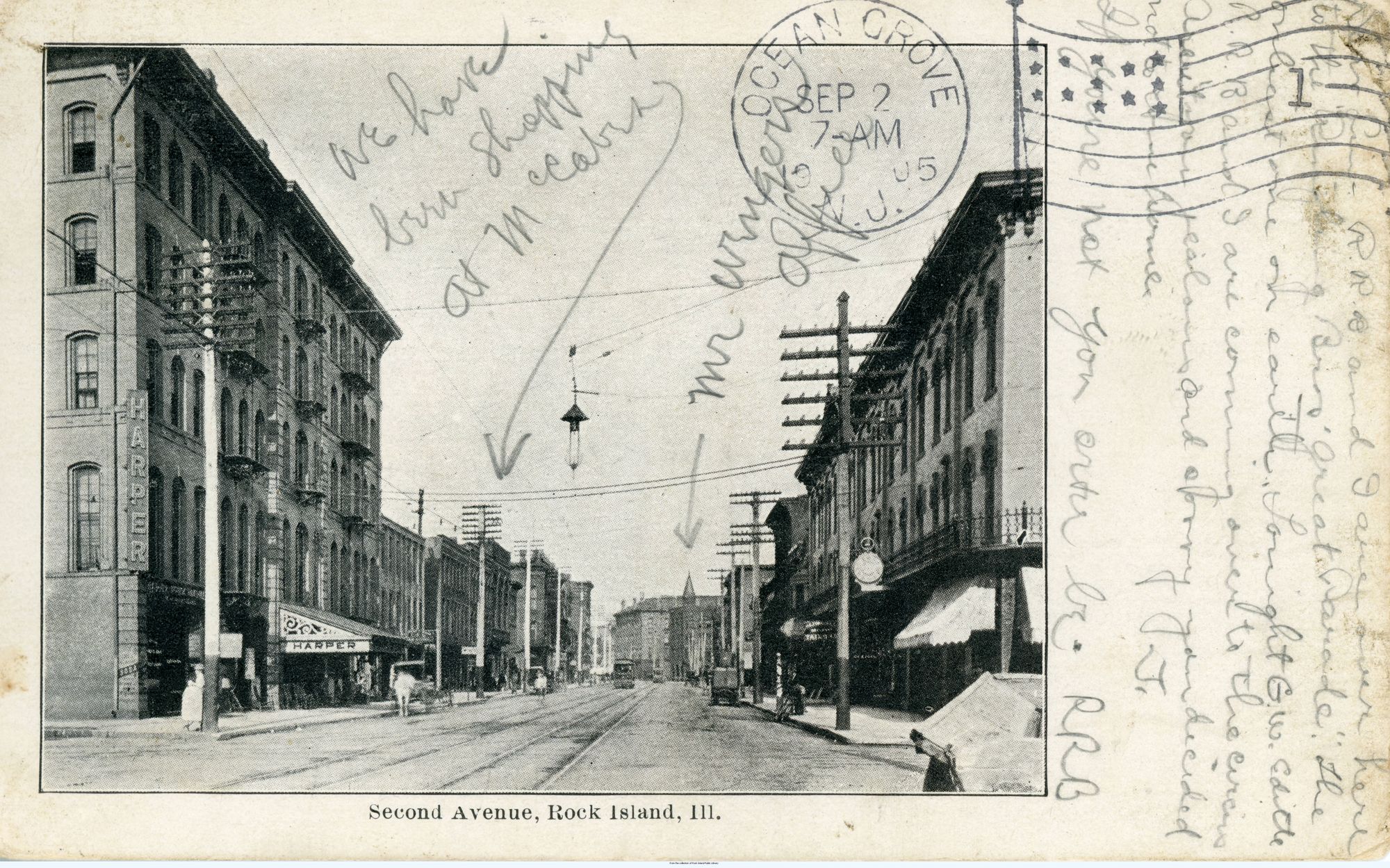
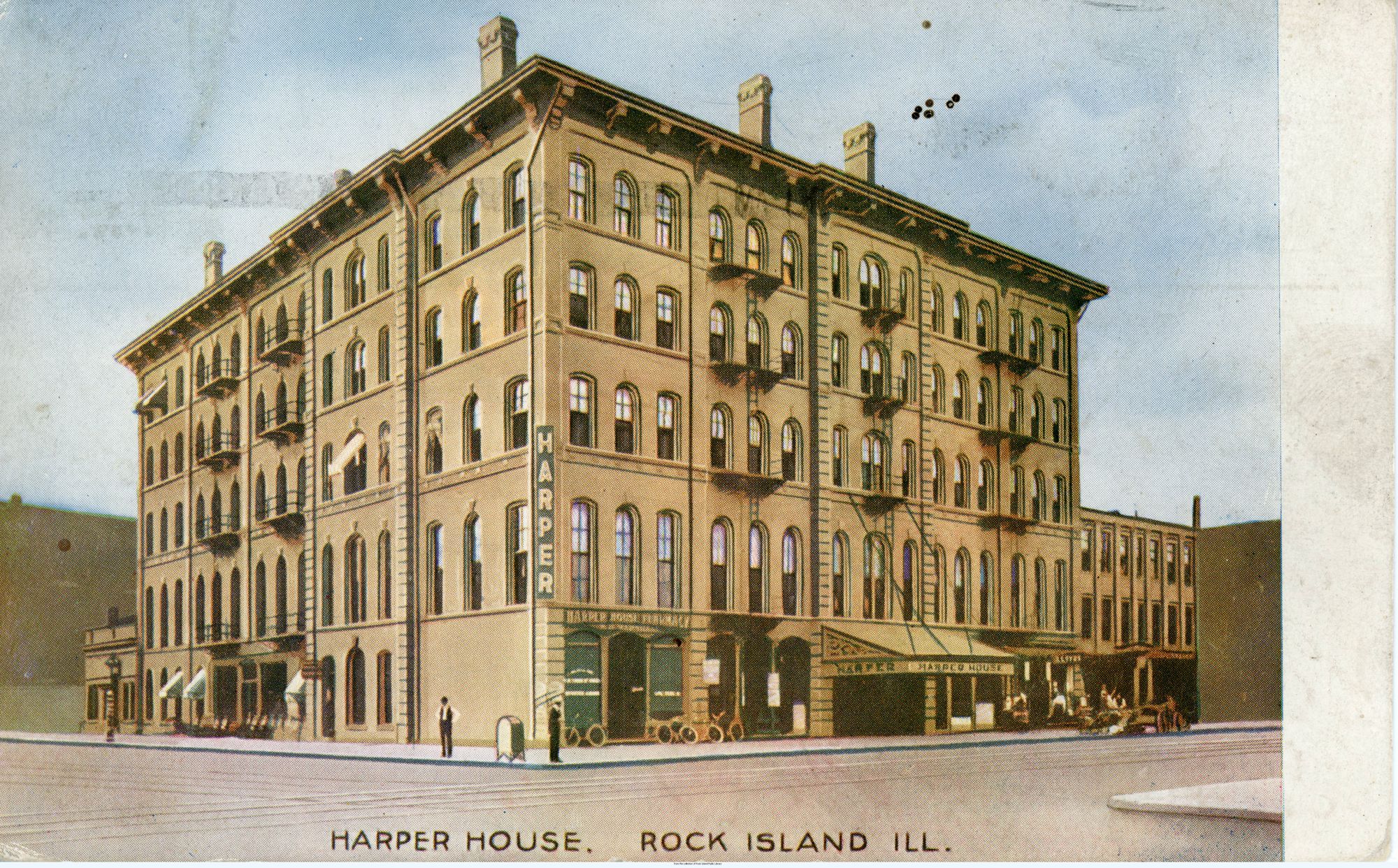
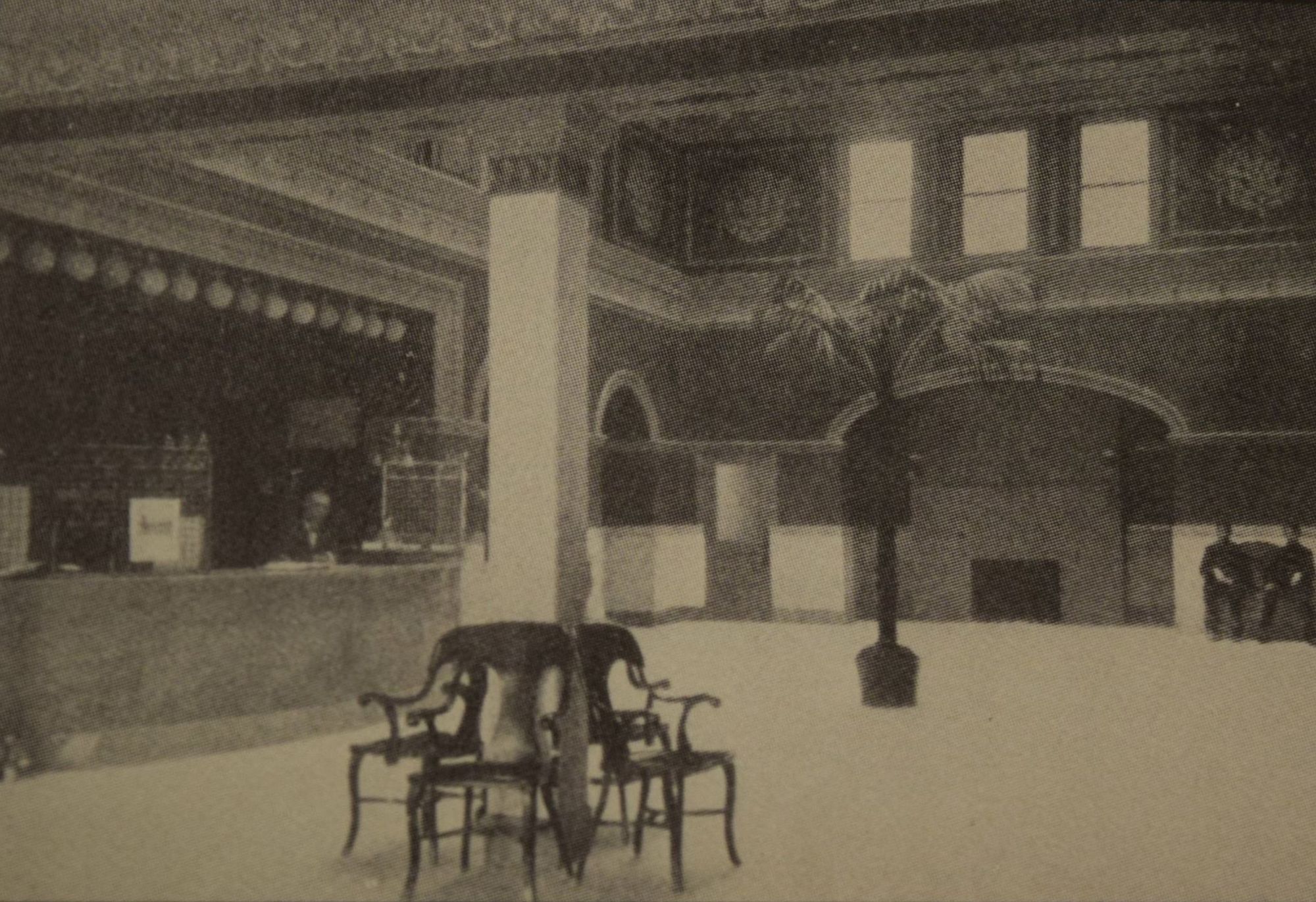
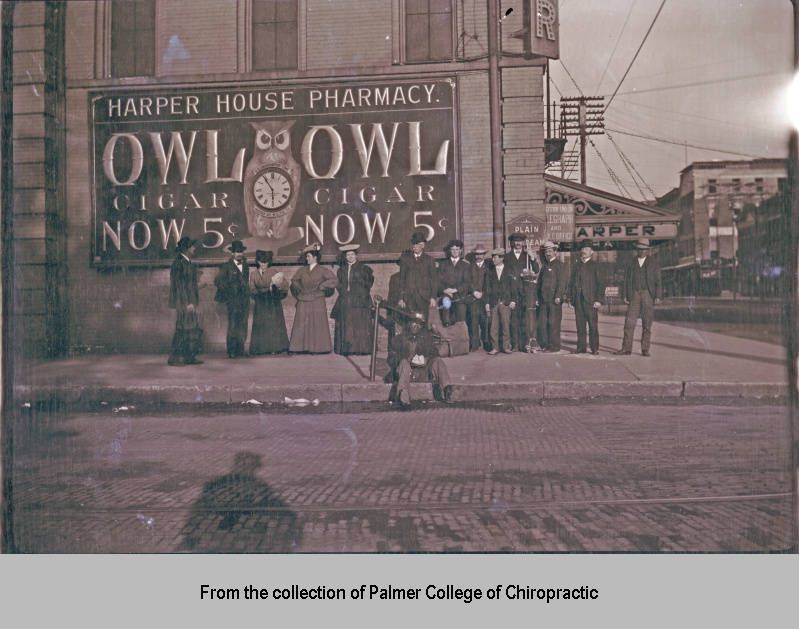
The Harper House fits into a pattern you’ll see in most small Midwestern cities–a hotel built in the 1870s or 1880s that catered to the elite, only to be surpassed by a newer, even more opulent hotel built in the 1910s or 1920s (in Rock Island, the Fort Armstrong Hotel). Designed by architect Isaac Holmes and completed in 1871, it was named for its owner, Ben Harper. Harper, a textbook Gilded Age tycoon, had his fingers in every little pie: hotels, coal, gas, and rail.
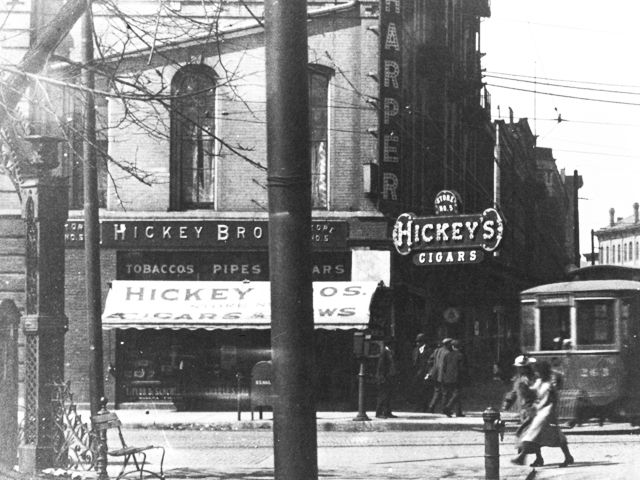
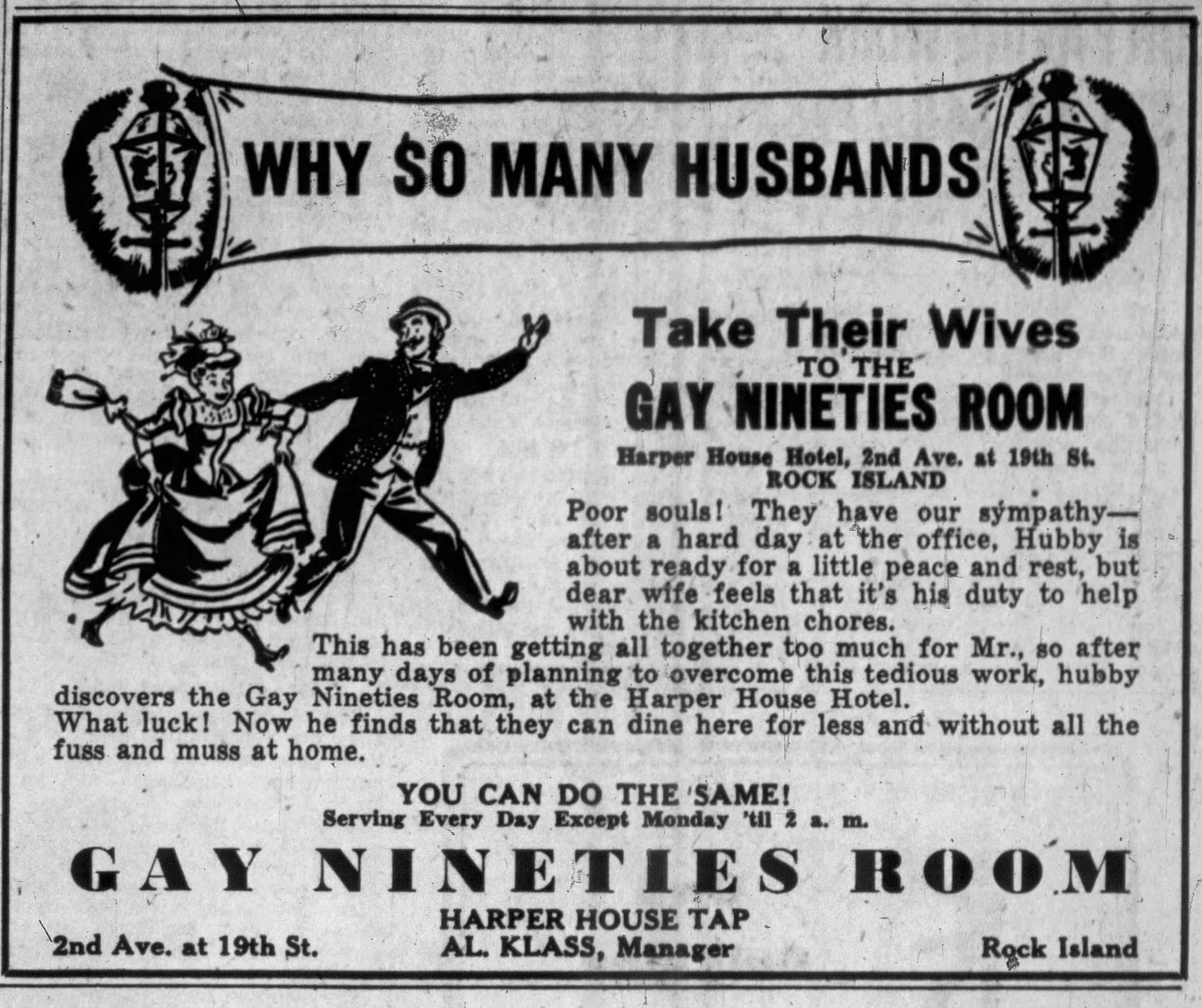

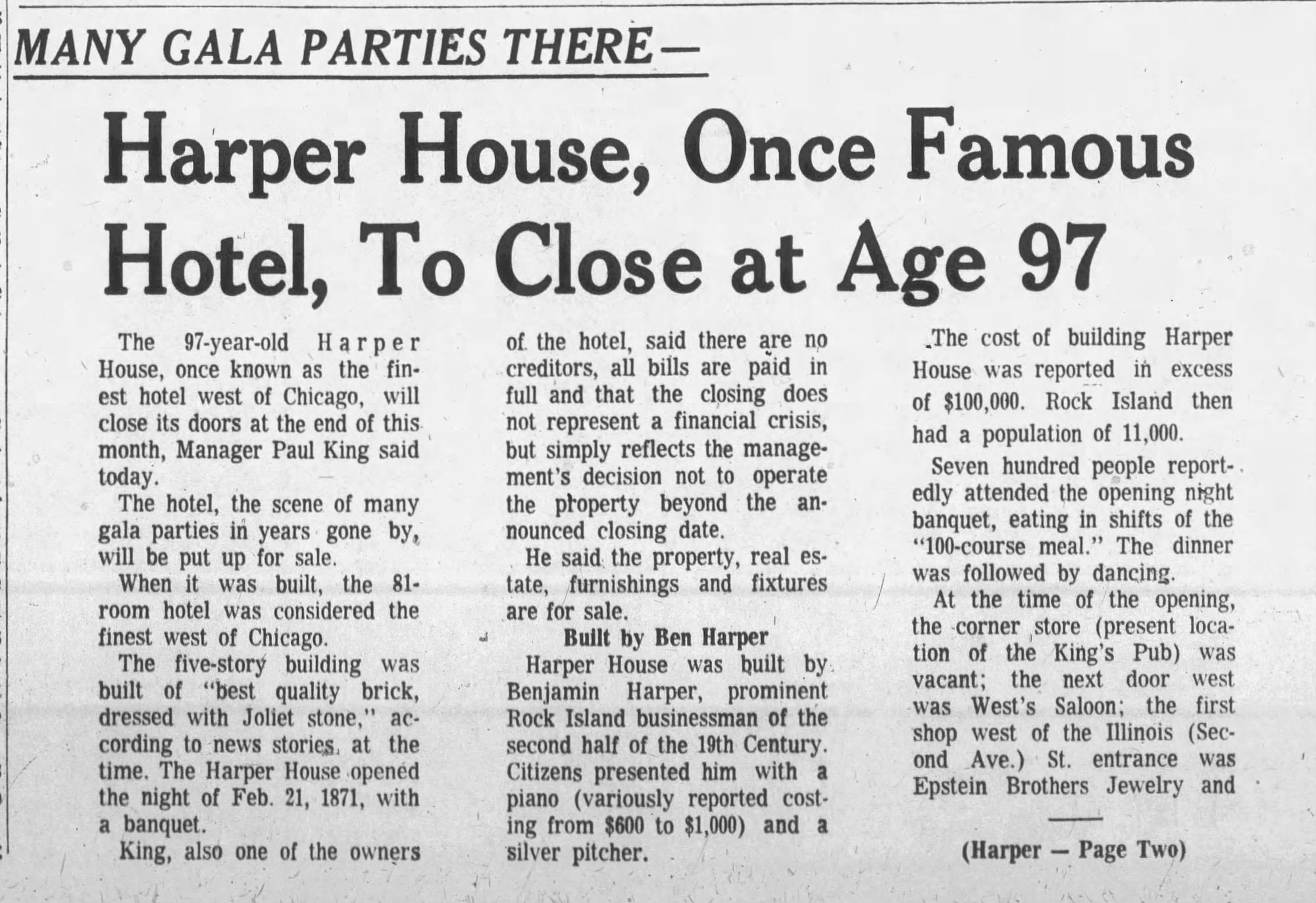

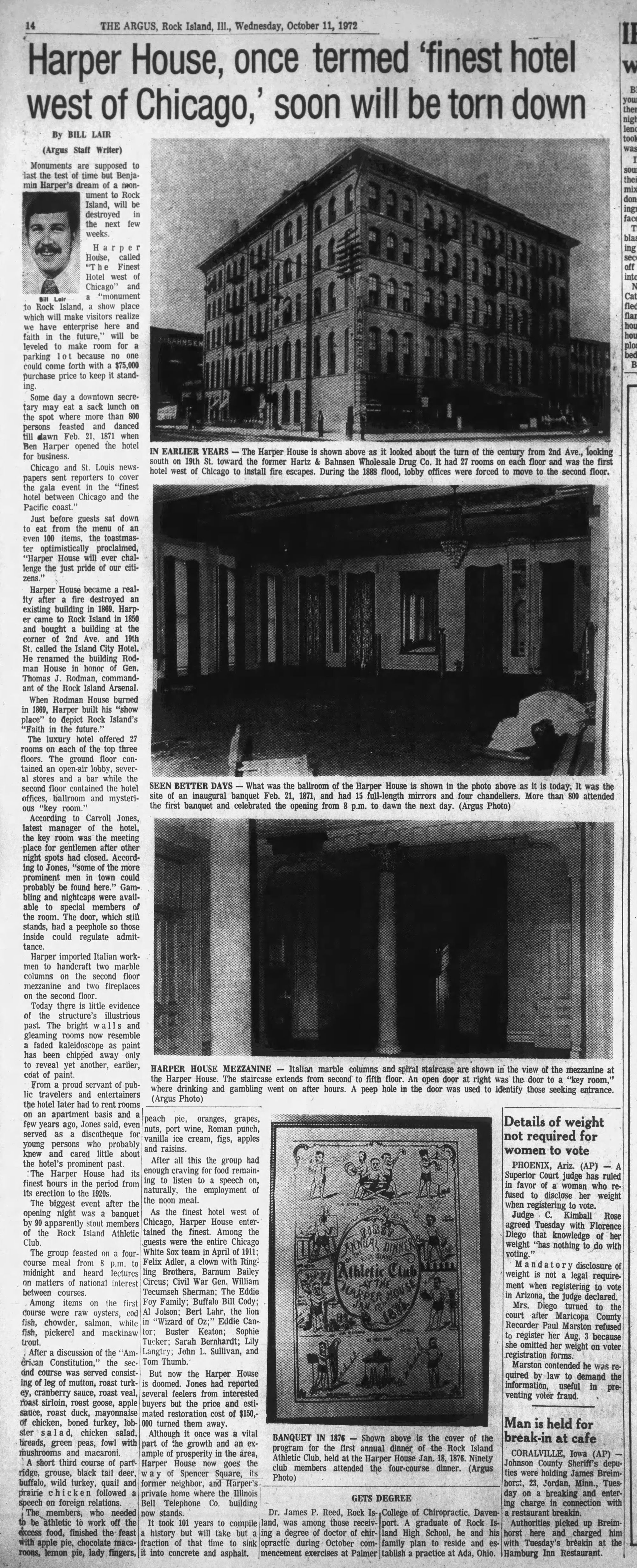
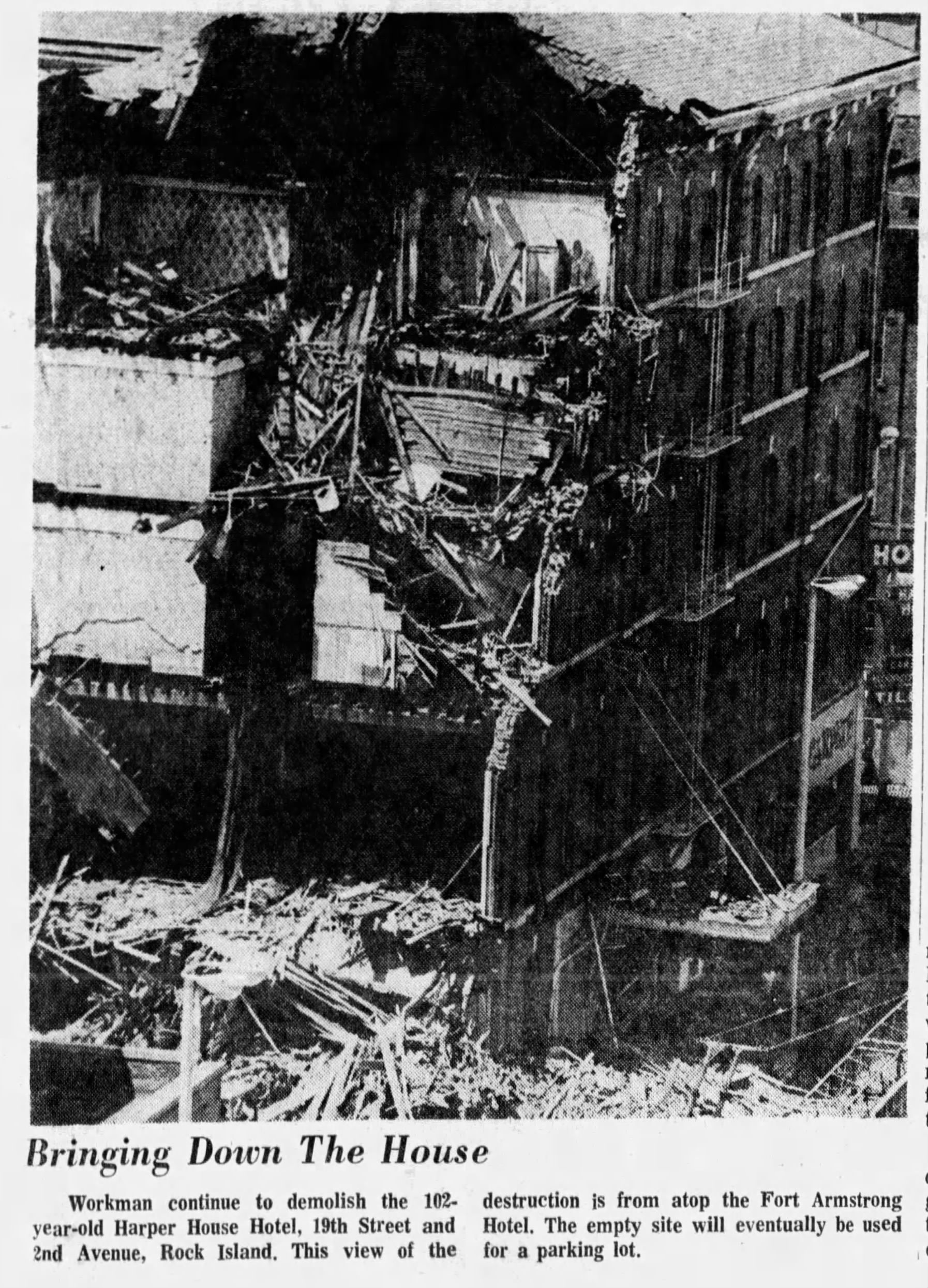
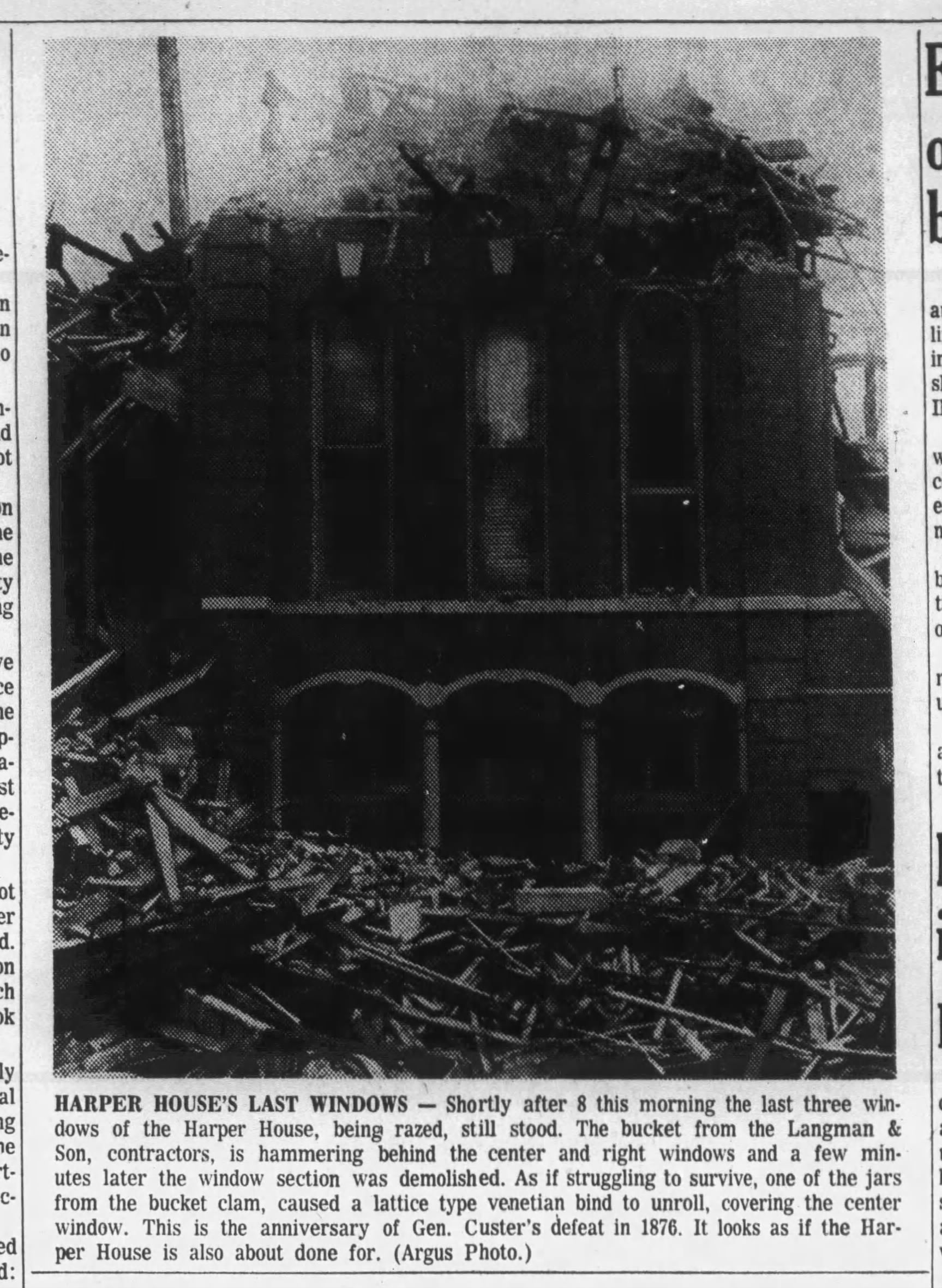
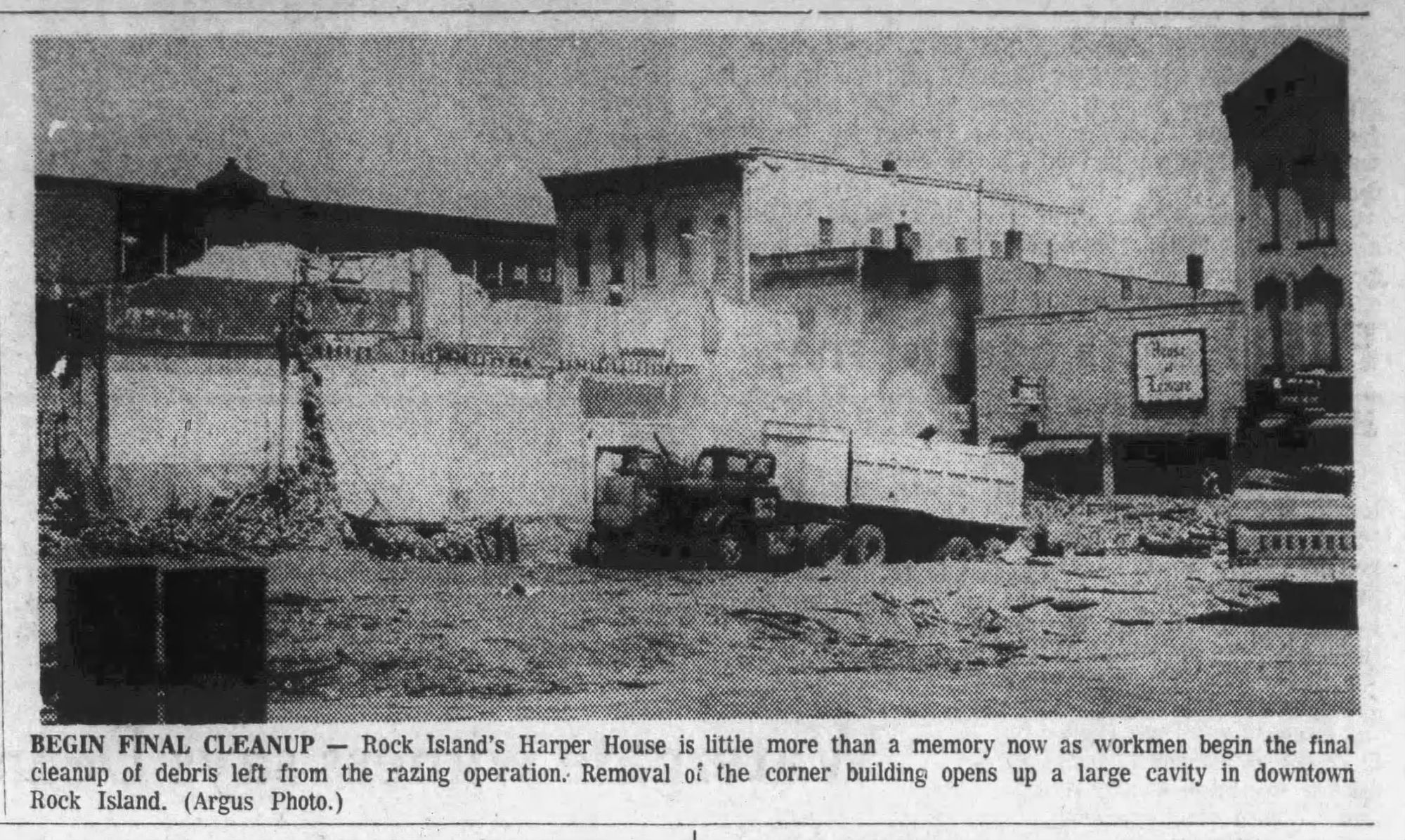
The Harper House’s peak lasted 50 years, from its construction until the 1920s, but it survived as a mid-market option, residential hotel, and an event venue for a few decades longer. You could rent a room for $9.50 a week in the 1950s–equivalent to a monthly rent of $435 today. Like most legacy downtowns in the US, downtown Rock Island started to struggle in the 1960s as federal money subsidized highways, cars, and suburban commerce. The Harper House closed to guests in 1968 and, after a brief preservation fight, was demolished in 1973.
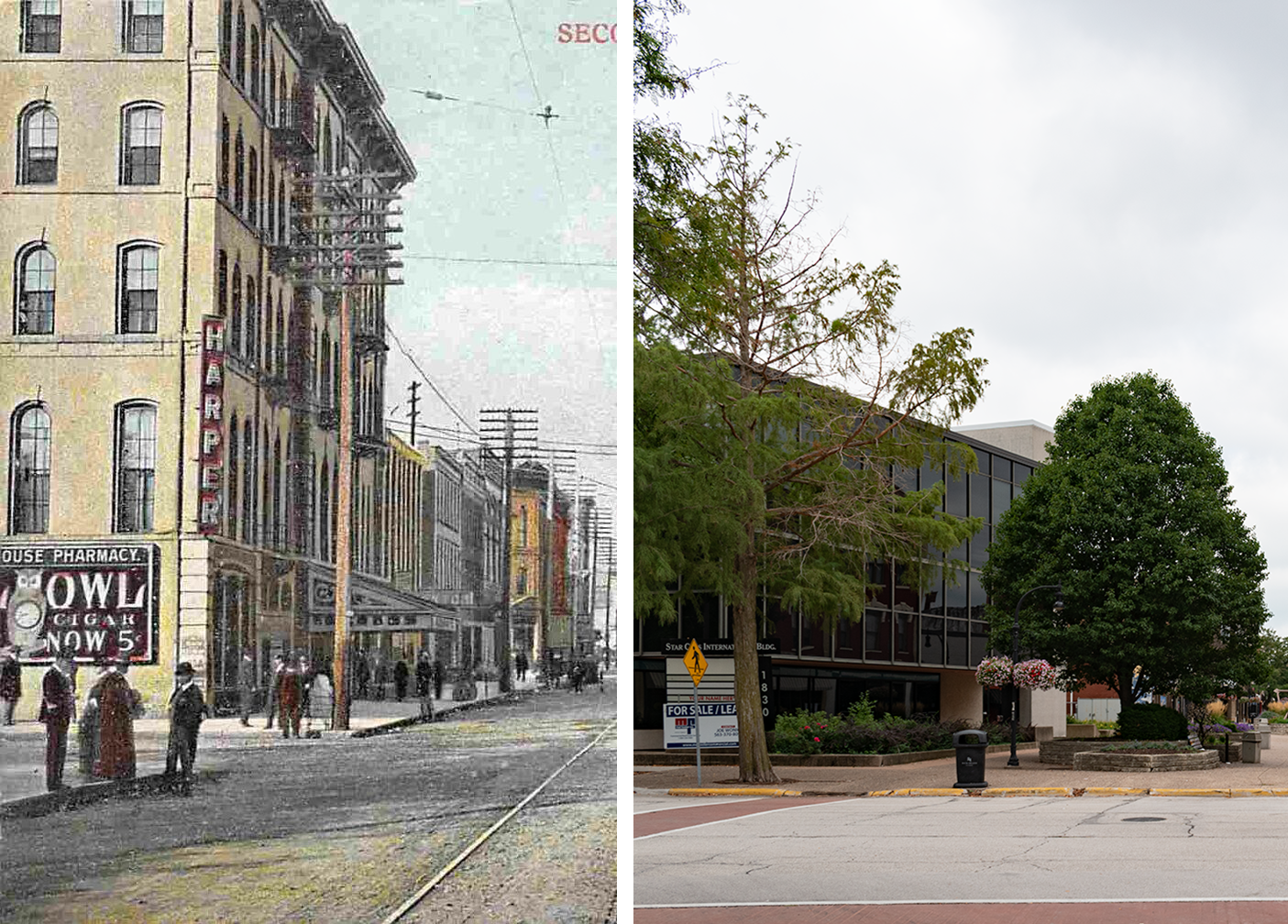
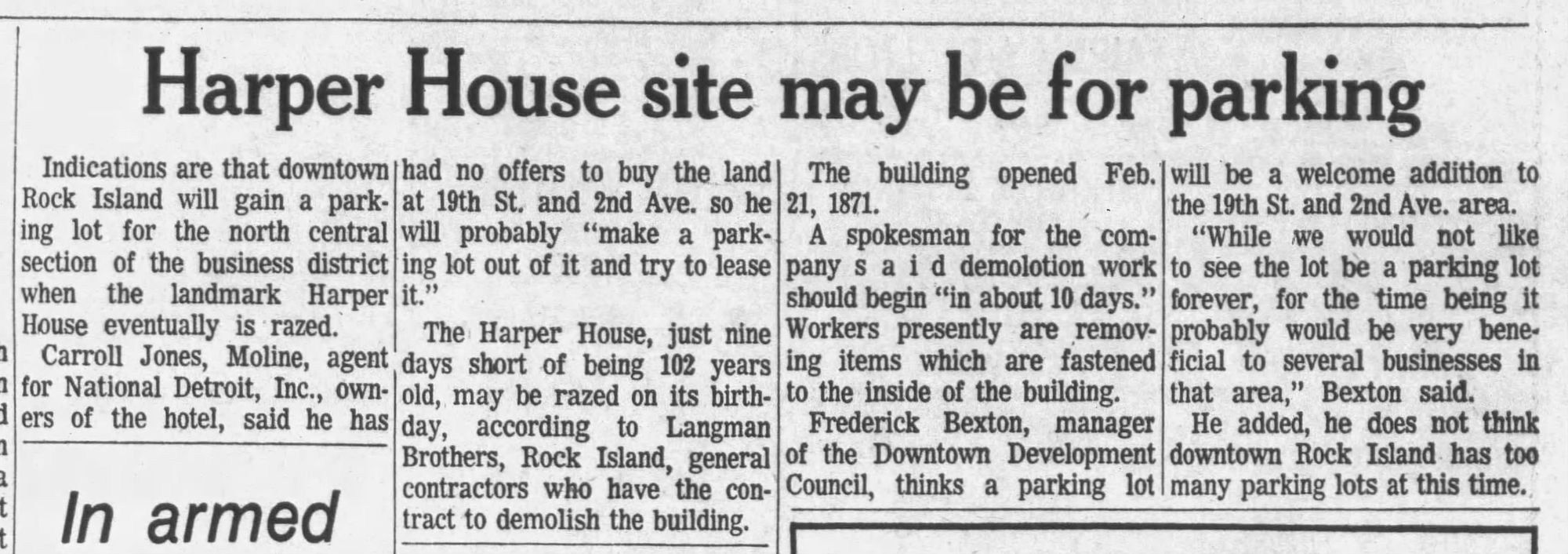
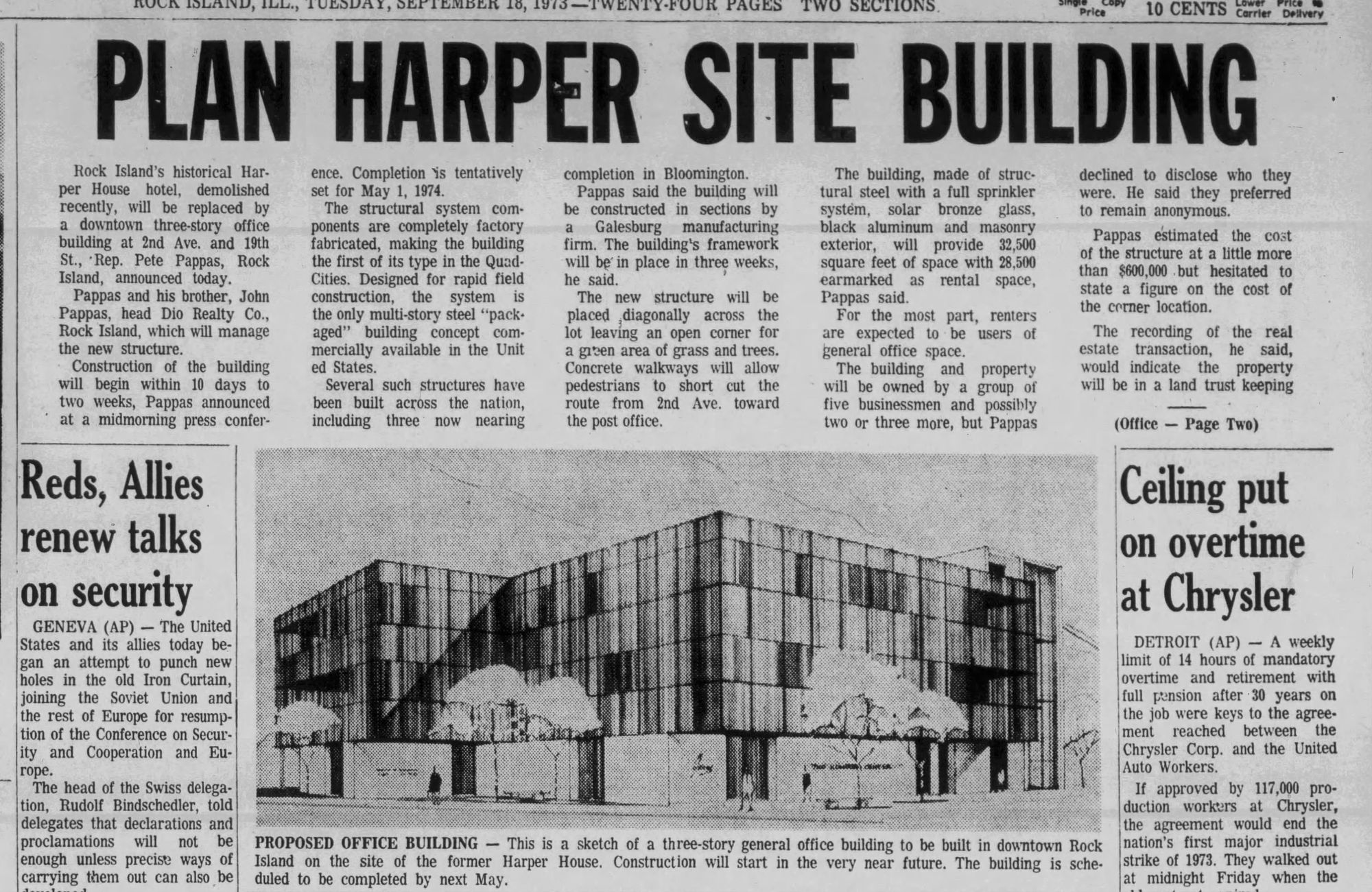
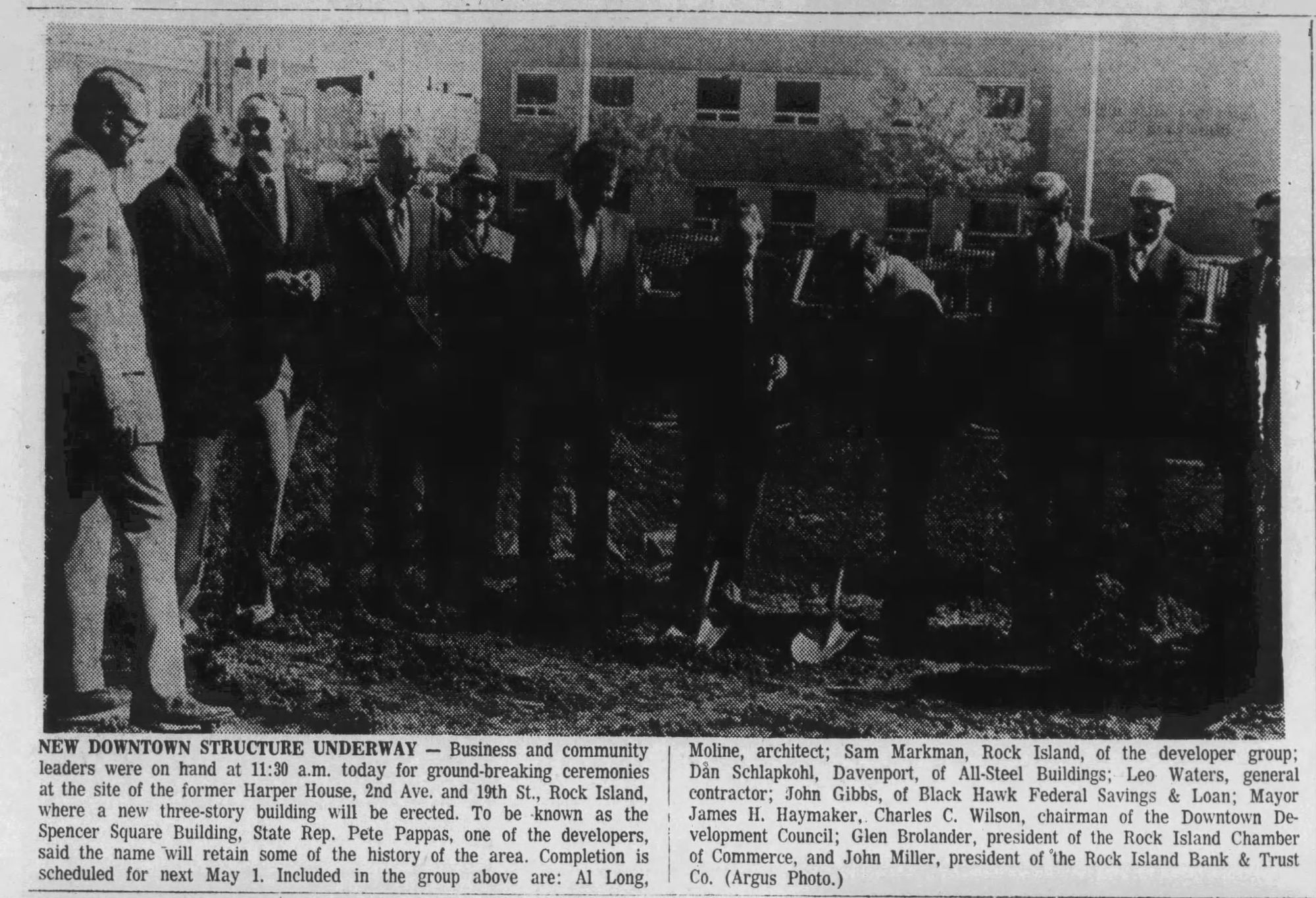

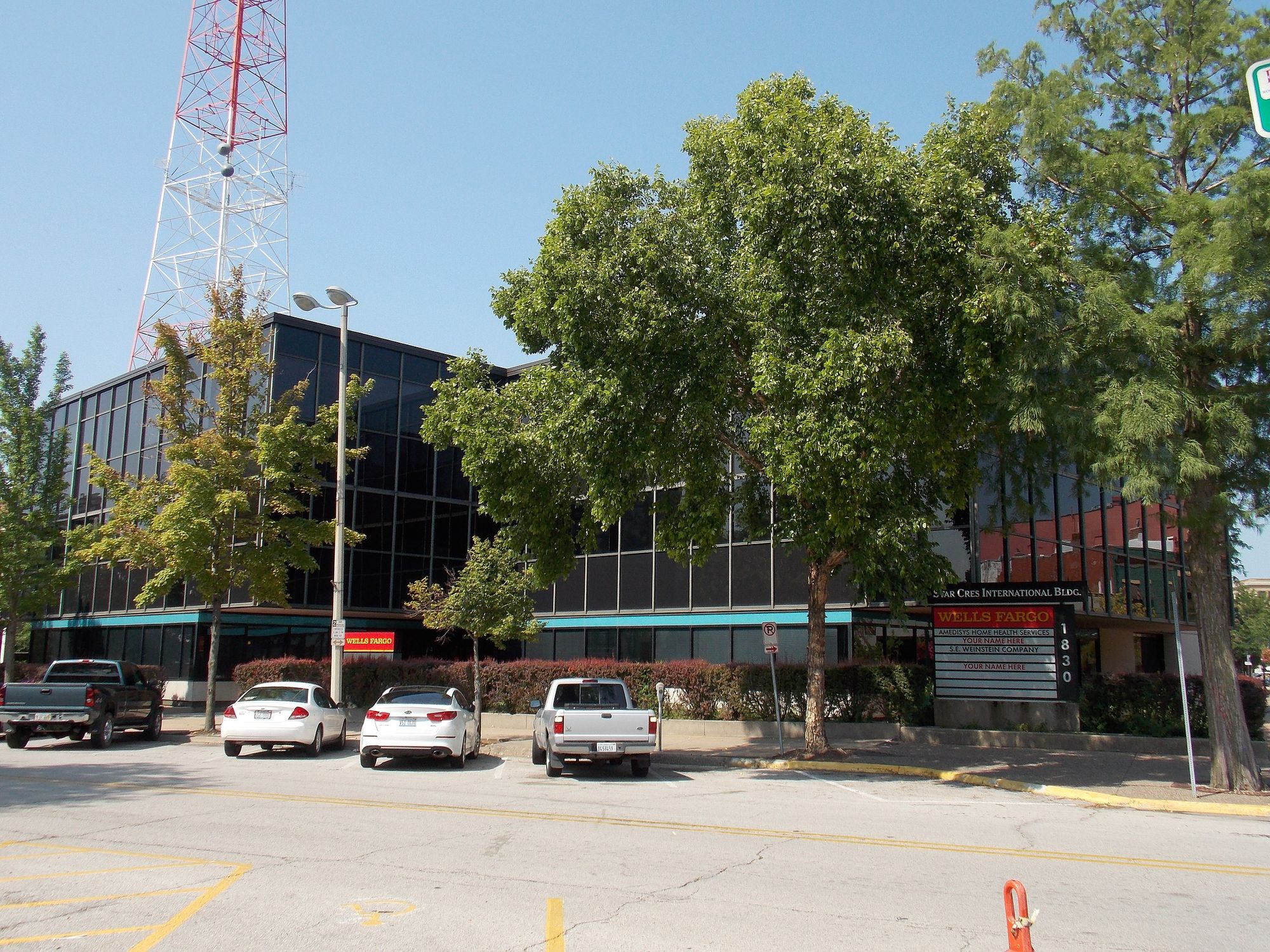
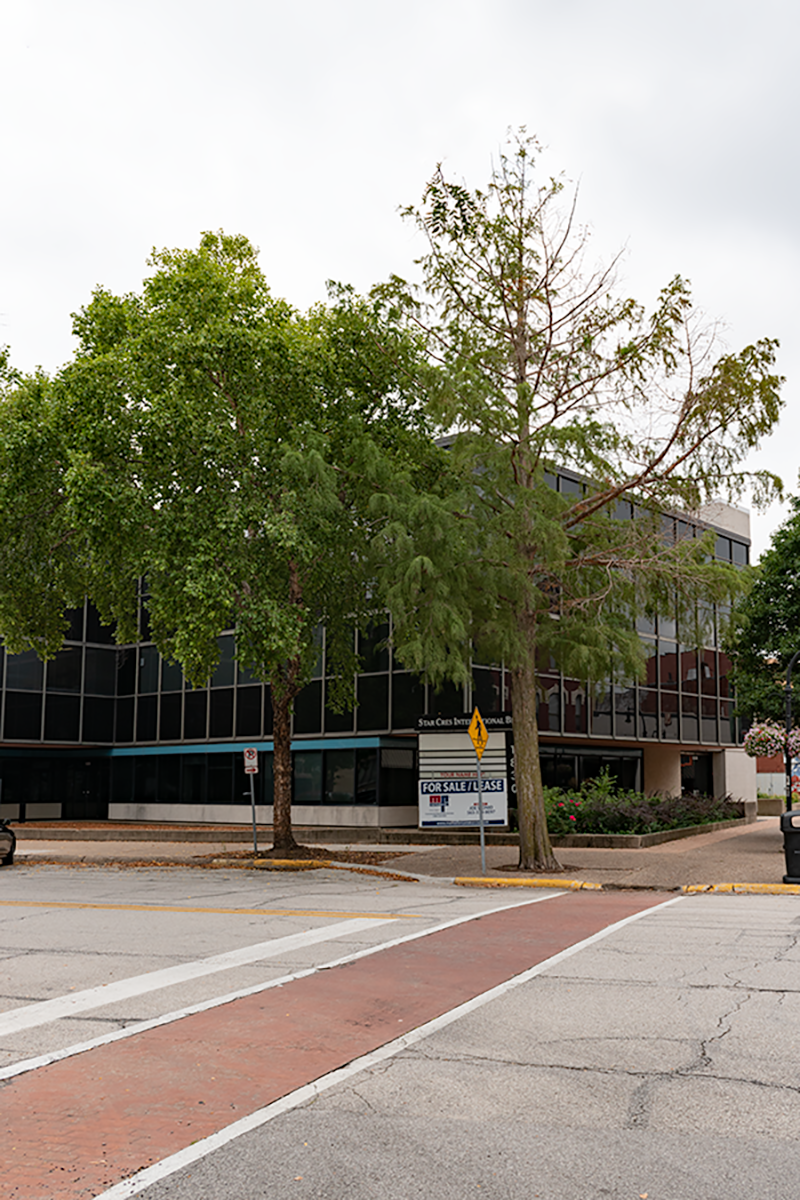
A demolished building in a Midwestern downtown in the 1970s…of course there were plans to turn this site into a parking lot. Thankfully, the Spencer Square Office Building went up instead. That's why I’m personally unbothered by the demolition of the Harper House–it was replaced with something, and the something that replaced it is a relatively rare example of modernism in Rock Island. Completed in 1974 and designed by Lawrence A. Long of the Systems Planning Group, it used a (at least partially) prefabricated system by Allsteel Building Co.

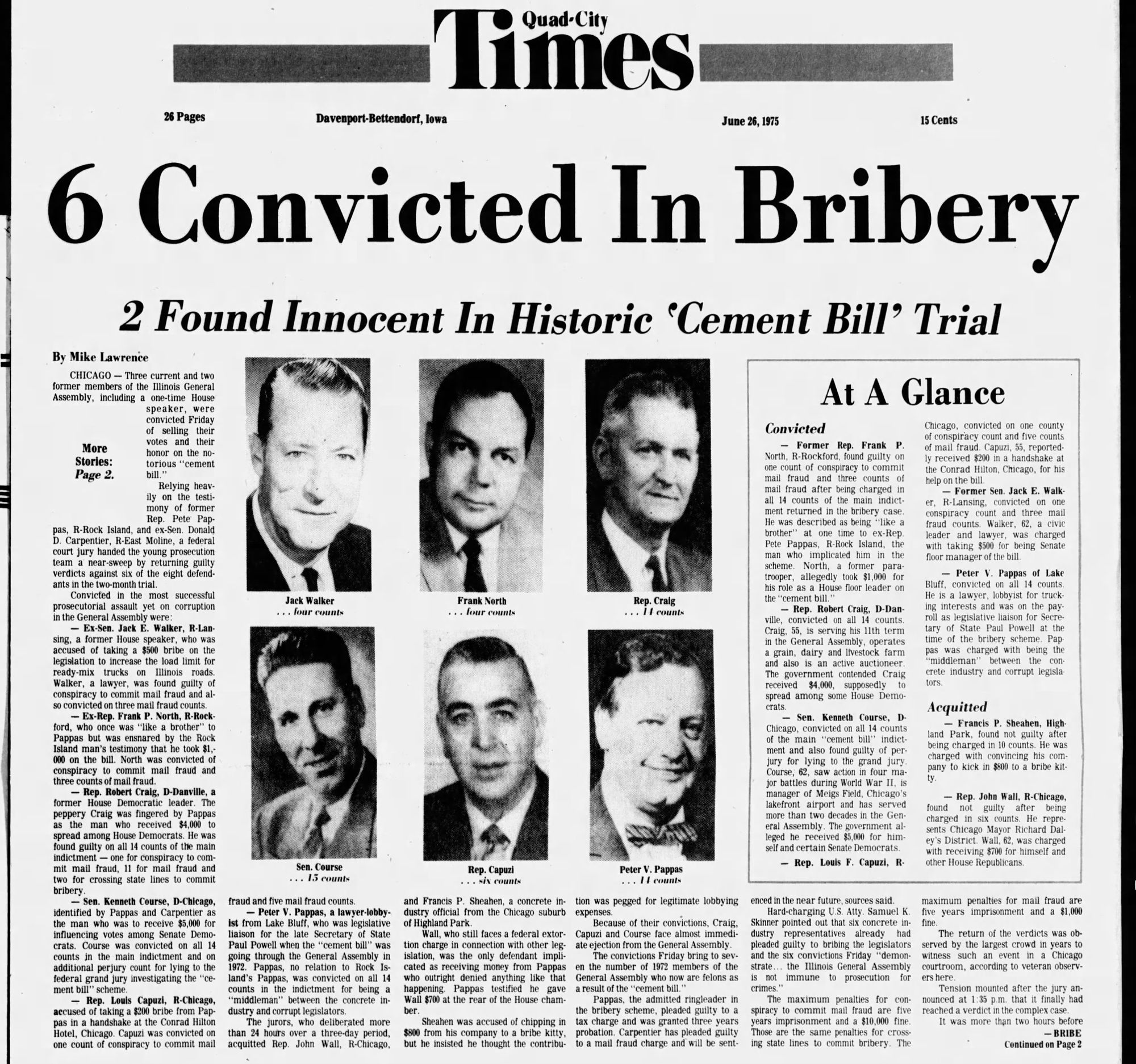
The owner and developer, Pete Pappas, played a major role in a typically Illinois corruption scandal while the building was going up. Pappas, a Republican in the Illinois General Assembly from 1966 until 1974, took bribes from concrete companies like the Crown family’s Material Services Corp. to pass a bill increasing the load limit for ready-mix trucks on Illinois roads (which presumably would allow them to make fewer trips and increase their profits [...but would damage the roads]). The bill passed in 1972, but it turned out the corrupt legislators debased themselves for nothing–the Governor vetoed it. Pappas took a deal, testified against the others, and five members of the General Assembly were convicted for their actions related to selling their votes to the ready-mix concrete industry (Rep. Pete Pappas received probation [confusingly, Pete V. Pappas, a lobbyist unrelated to the Rock Island guy, was also convicted for his role in the corruption scandal].
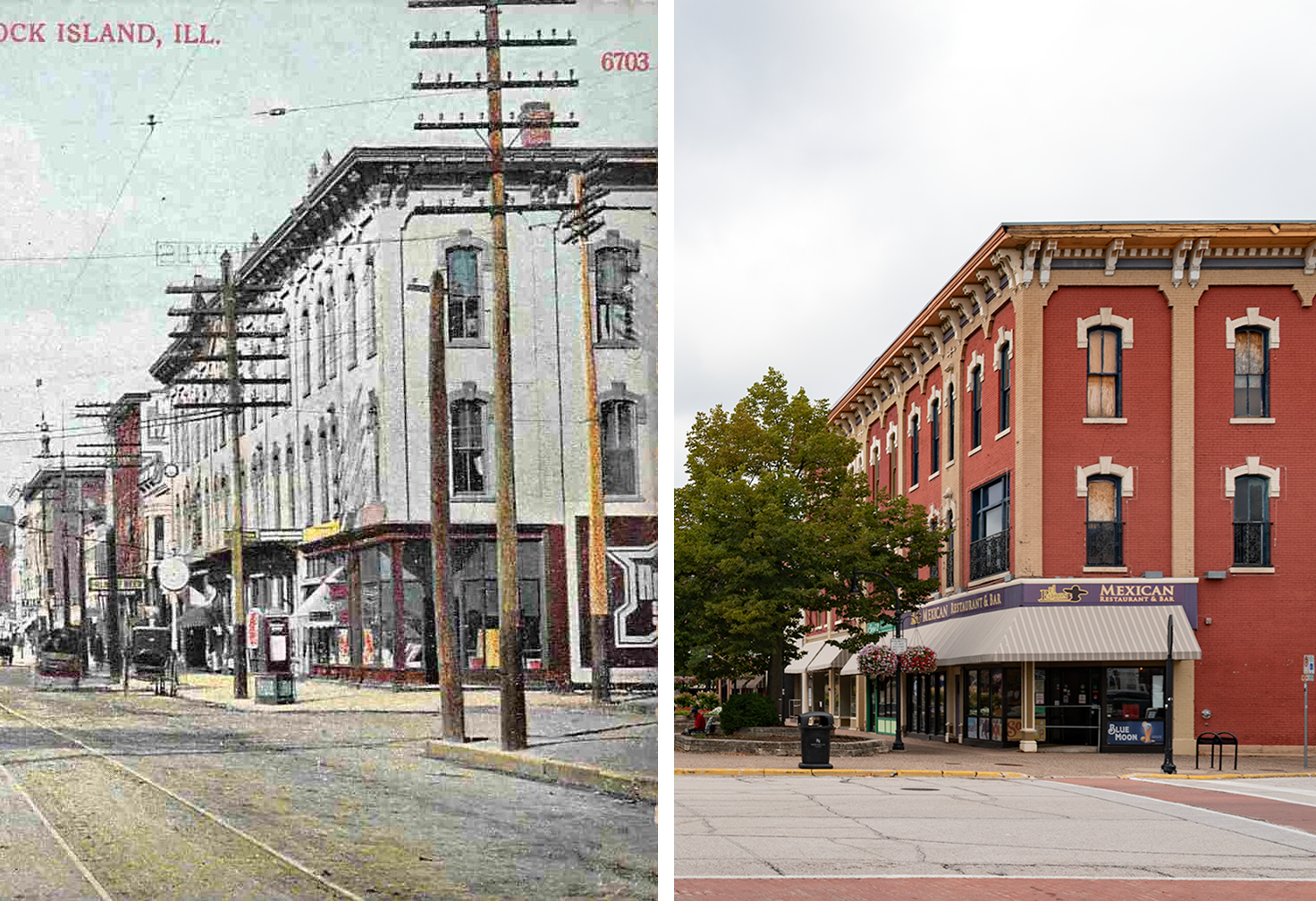
Even after the demolition of the Harper House, you can still see some work by architect Isaac Holmes on this block of Second Ave–he also designed the Star Block, four individual buildings making up an Italianate whole on the right side of the postcard/photo. Built in 1874 with retail on the first floor and offices and now apartments above, 150 years of businesses have operated out of the Star Block. Non-comprehensively: a tobacco shop, a grocer, a jeweler, a photo studio, a china and crockery store, a sport shop, Barkan’s clothing shop, an Irish pub, and now a Mexican joint.

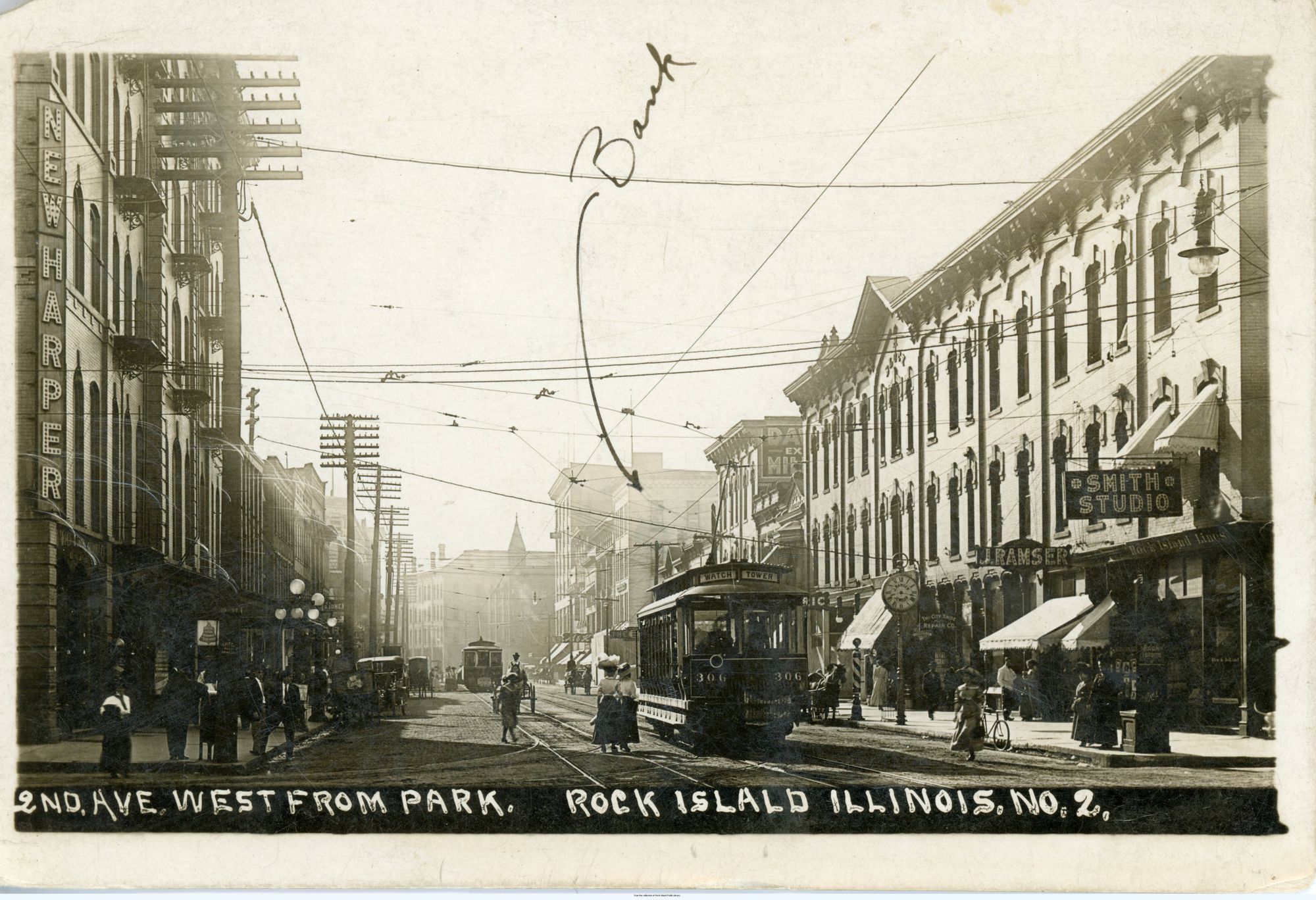
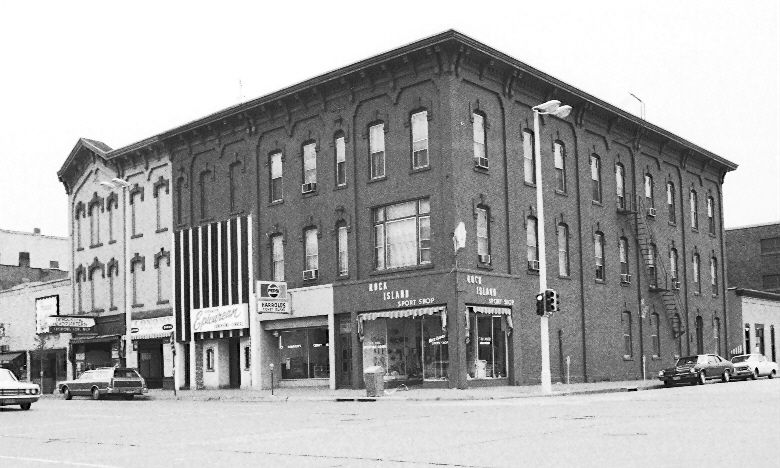
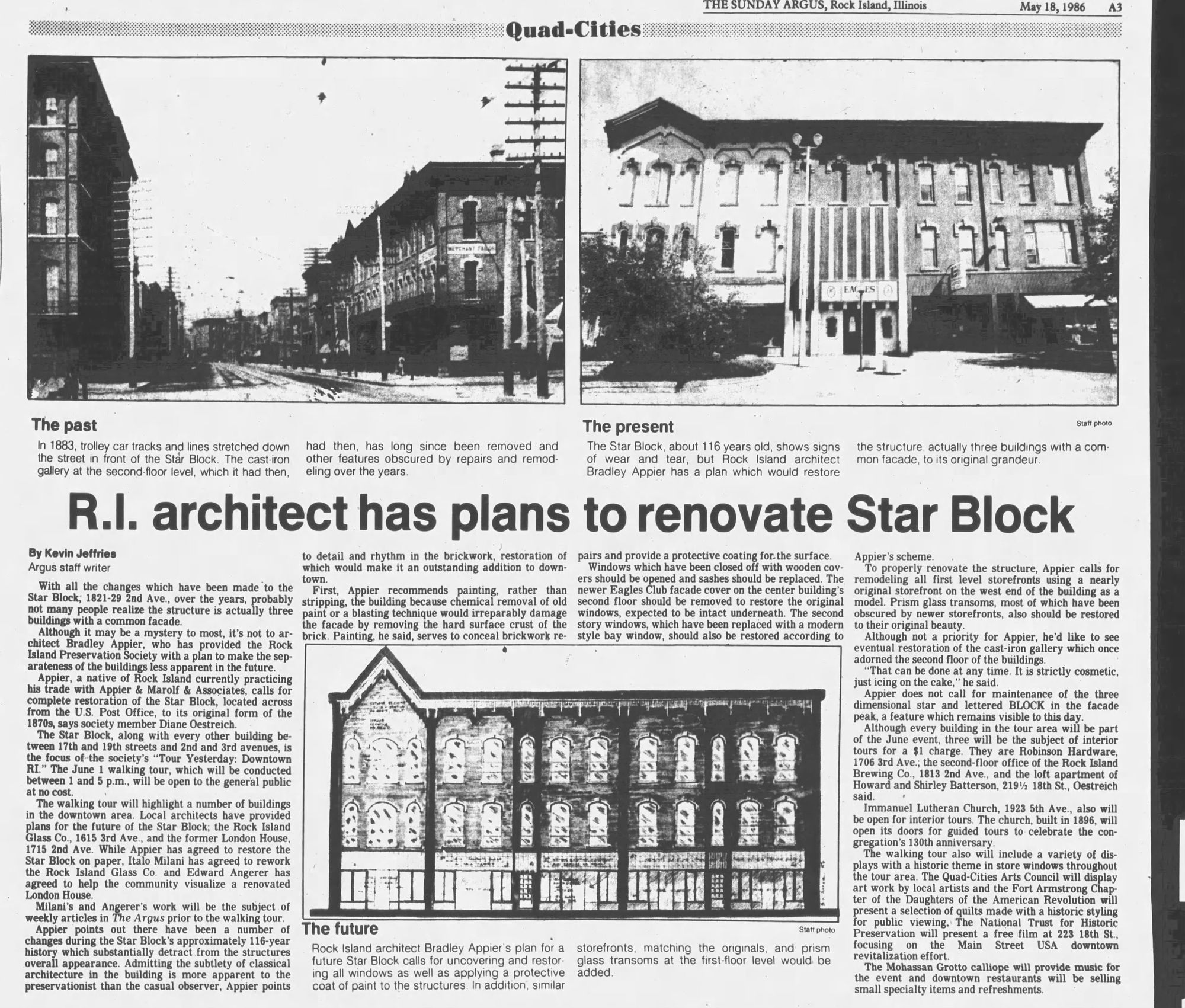
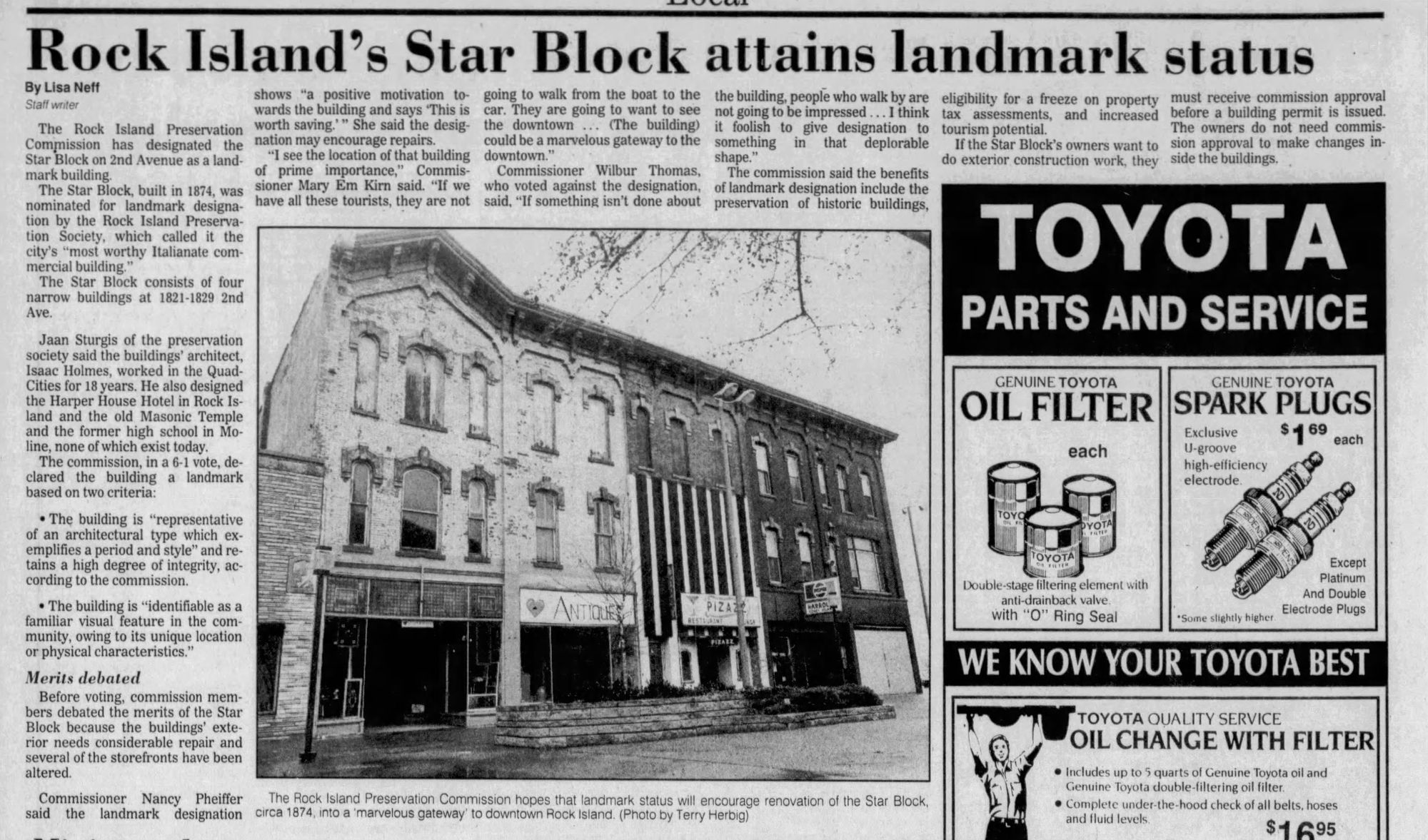
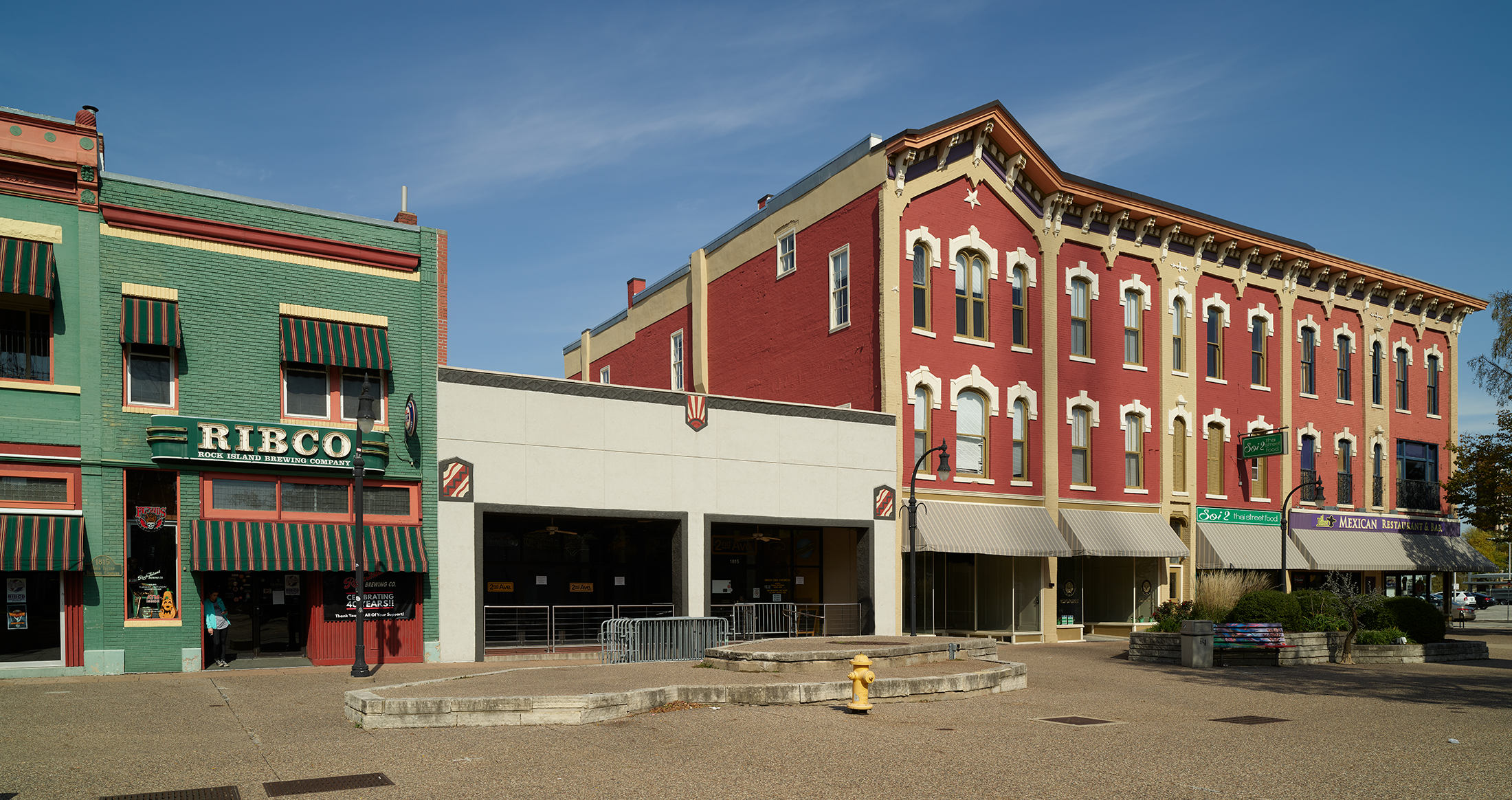
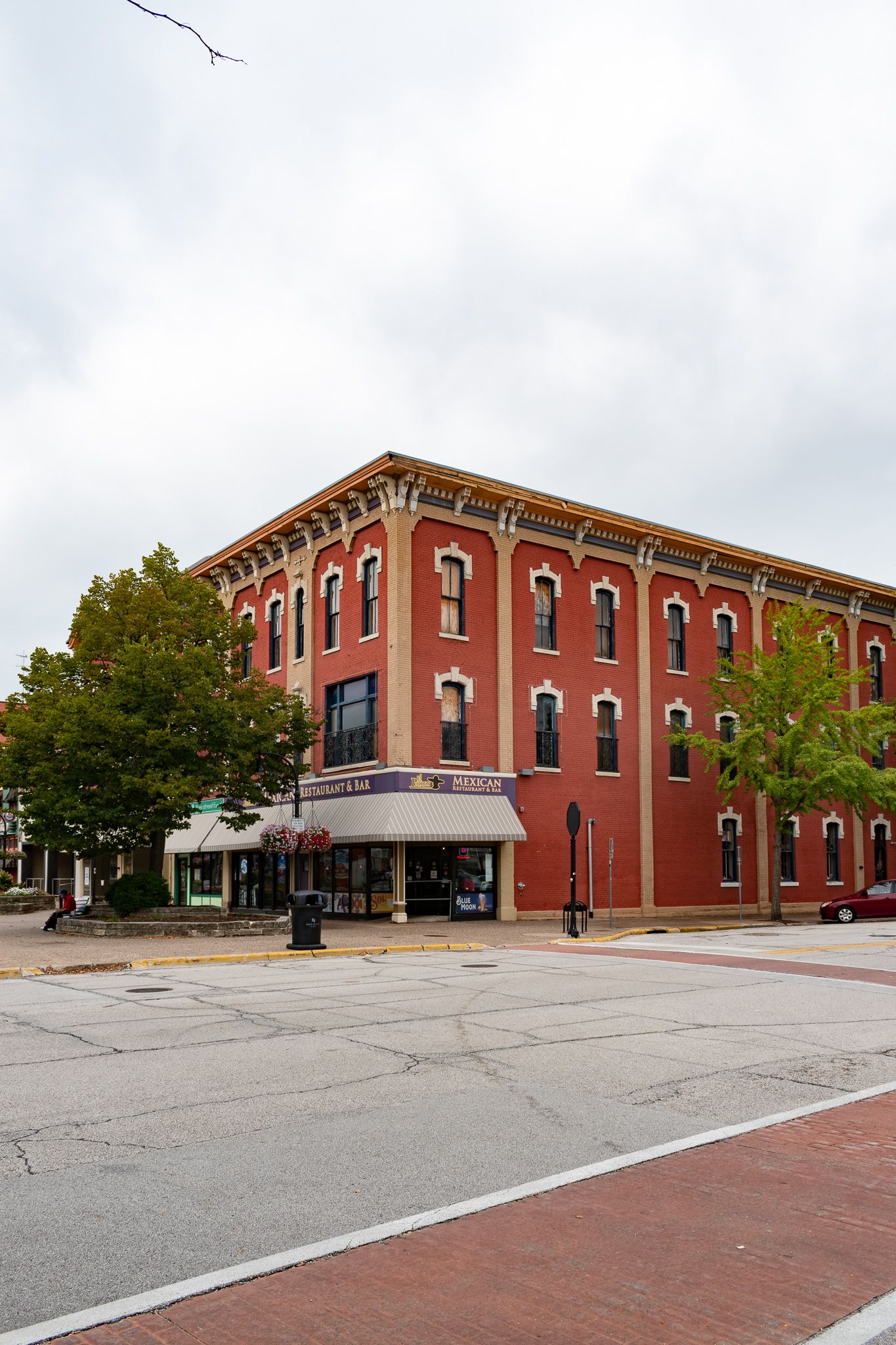
Designated a Rock Island landmark in 1991, the building was rehabbed in the 2010s, with the upper floors converted into apartments. Typical for many of these projects, financing the redevelopment required an incredibly complex mix of loans, tax credits, and grants from a ridiculously long list of sources: the City of Rock Island, Bridge Investment Community Development Corp., Modern Woodmen Bank, Illinois Attorney General National Foreclosure Settlement Funds, Illinois affordable housing tax credits, MidAmerican Energy (rebates) and the Rock Island Community Foundation. The Star Block was included as a contributing structure in the NRHP-listed Downtown Rock Island Historic District in 2020.
Federal money subsidizing highways and suburban living combined with the advent of the shopping mall to hollow out older downtowns. Pedestrian malls like the Great River Plaza–this block of Second Avenue between the Star Block and the modern office building that replaced the Harper House–were one tactic deployed by cities to stem the decline. Designed by planners Barton-Aschman Associates, the Great River Plaza opened in 1978. By that point the pedestrian mall was a common economic revitalization tool. The first one opened in Kalamazoo, Michigan in 1959, designed by Victor Gruen Associates–ironically, the same firm that invented the American-style indoor shopping mall.
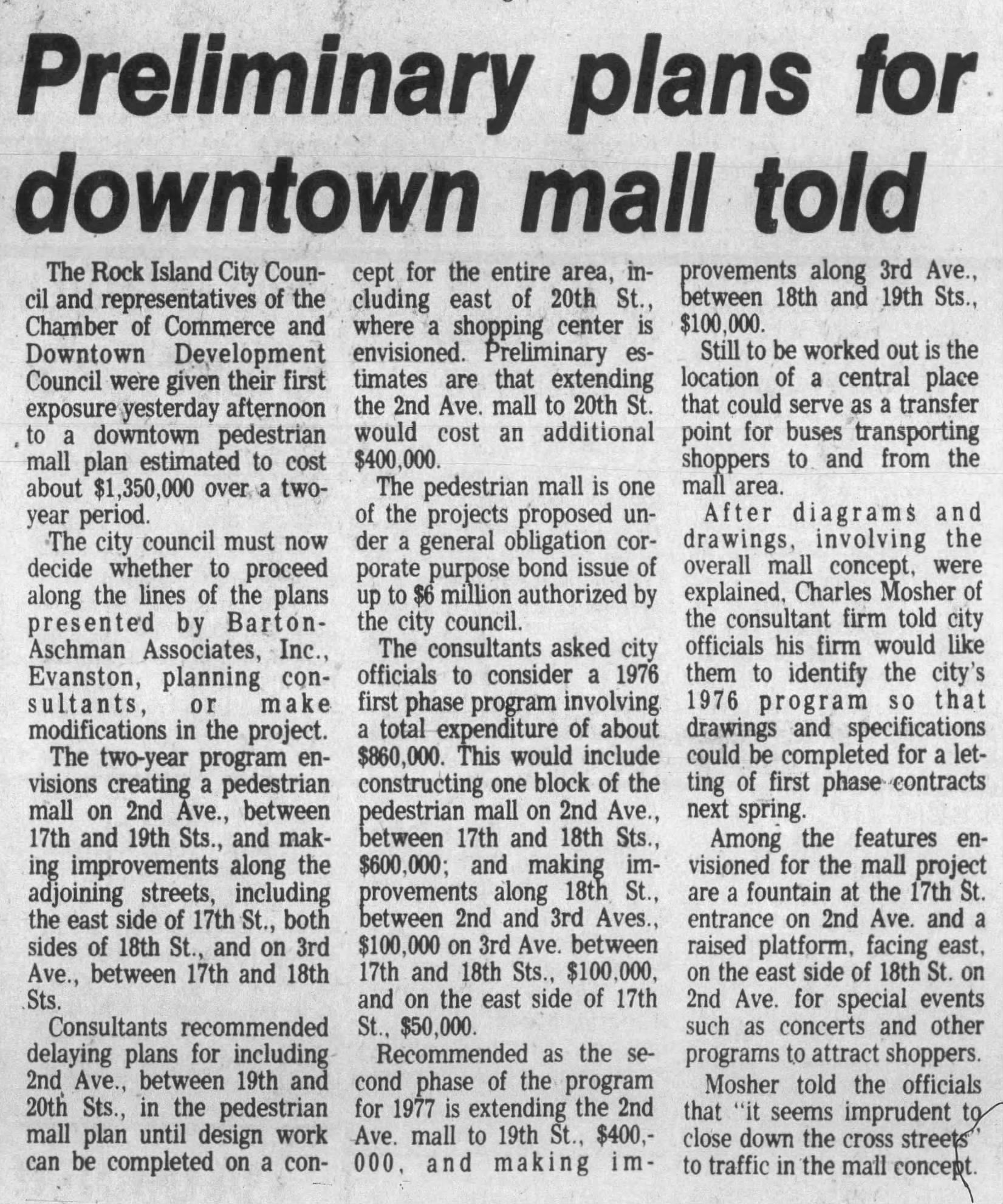

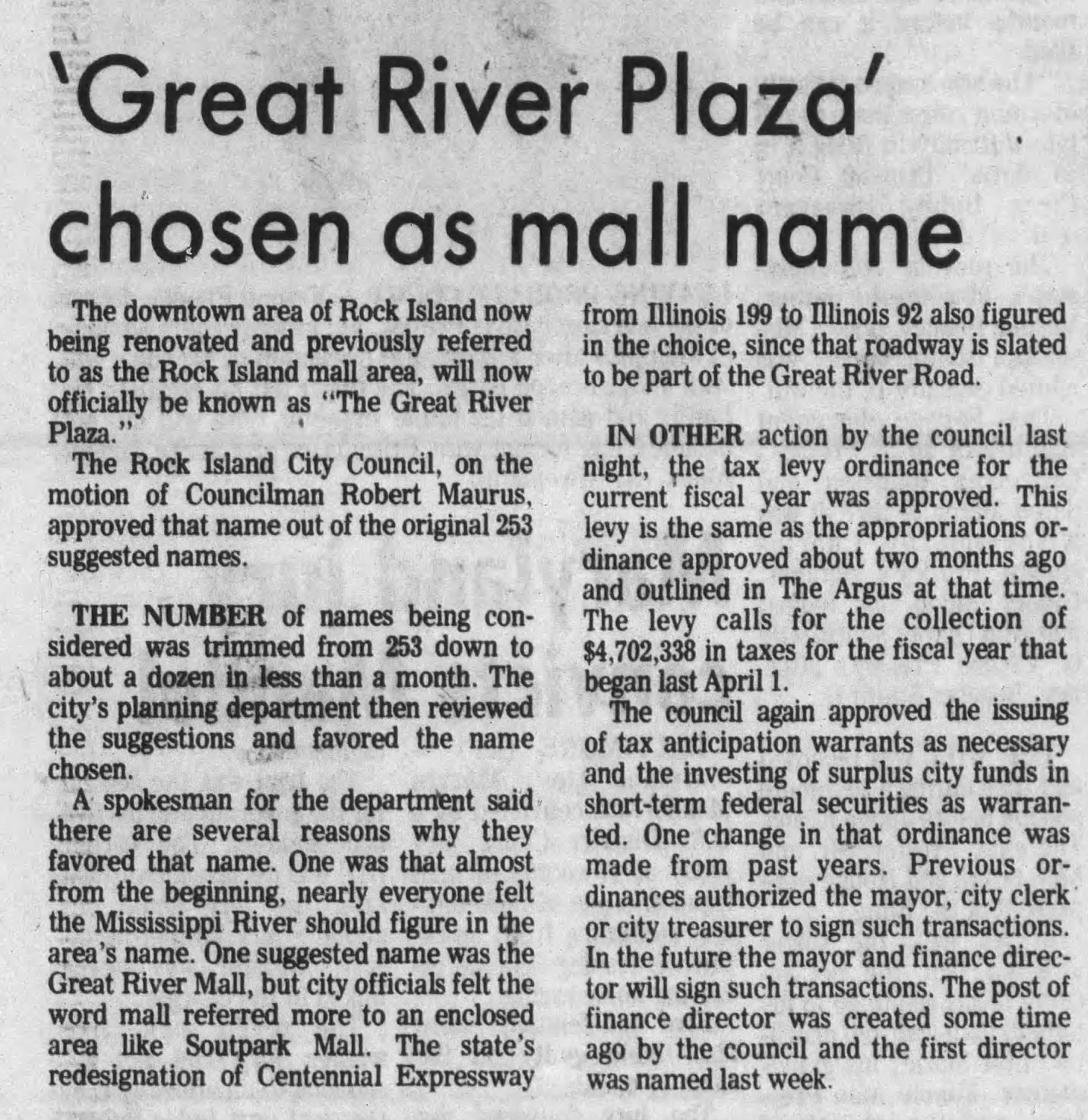
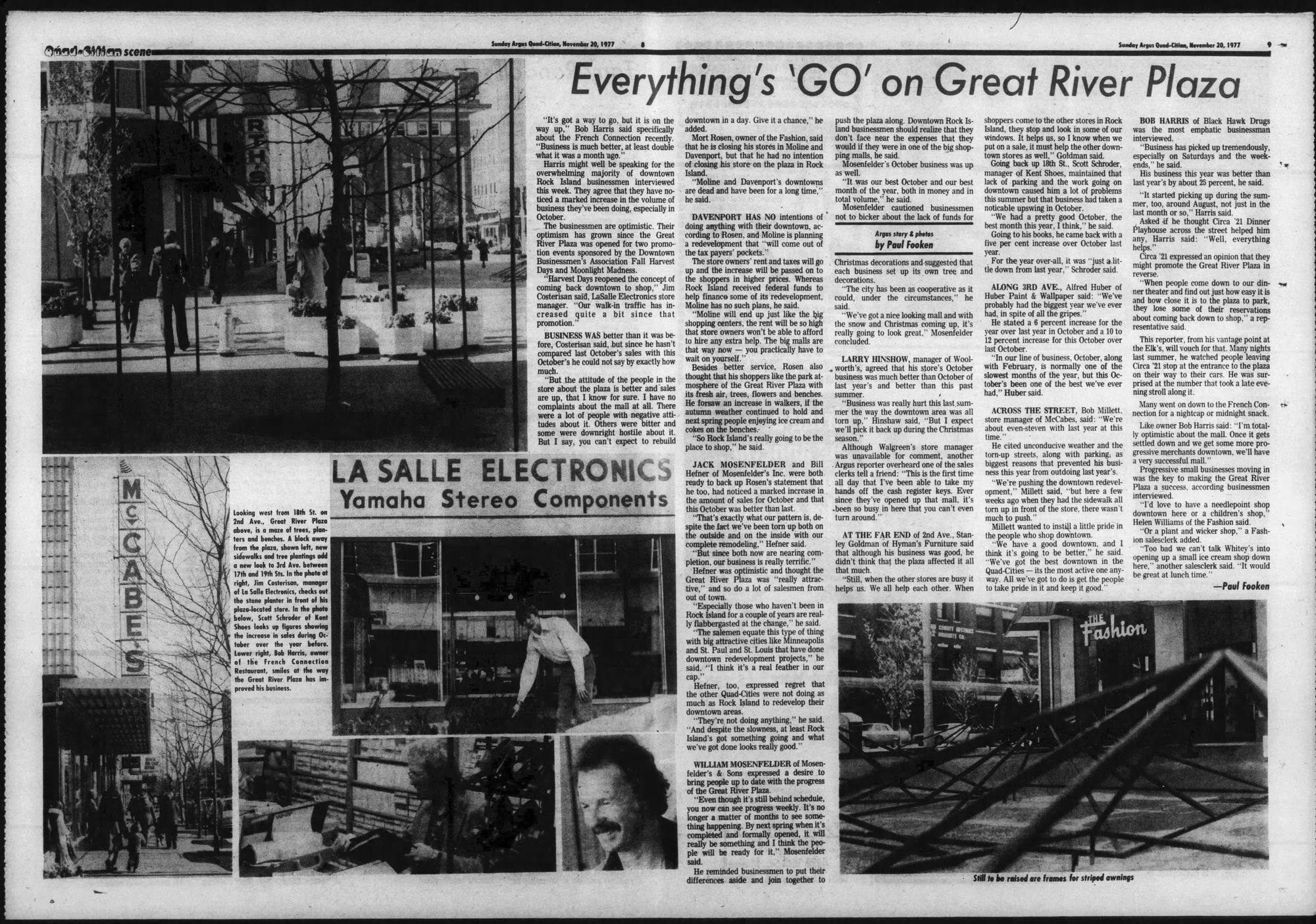
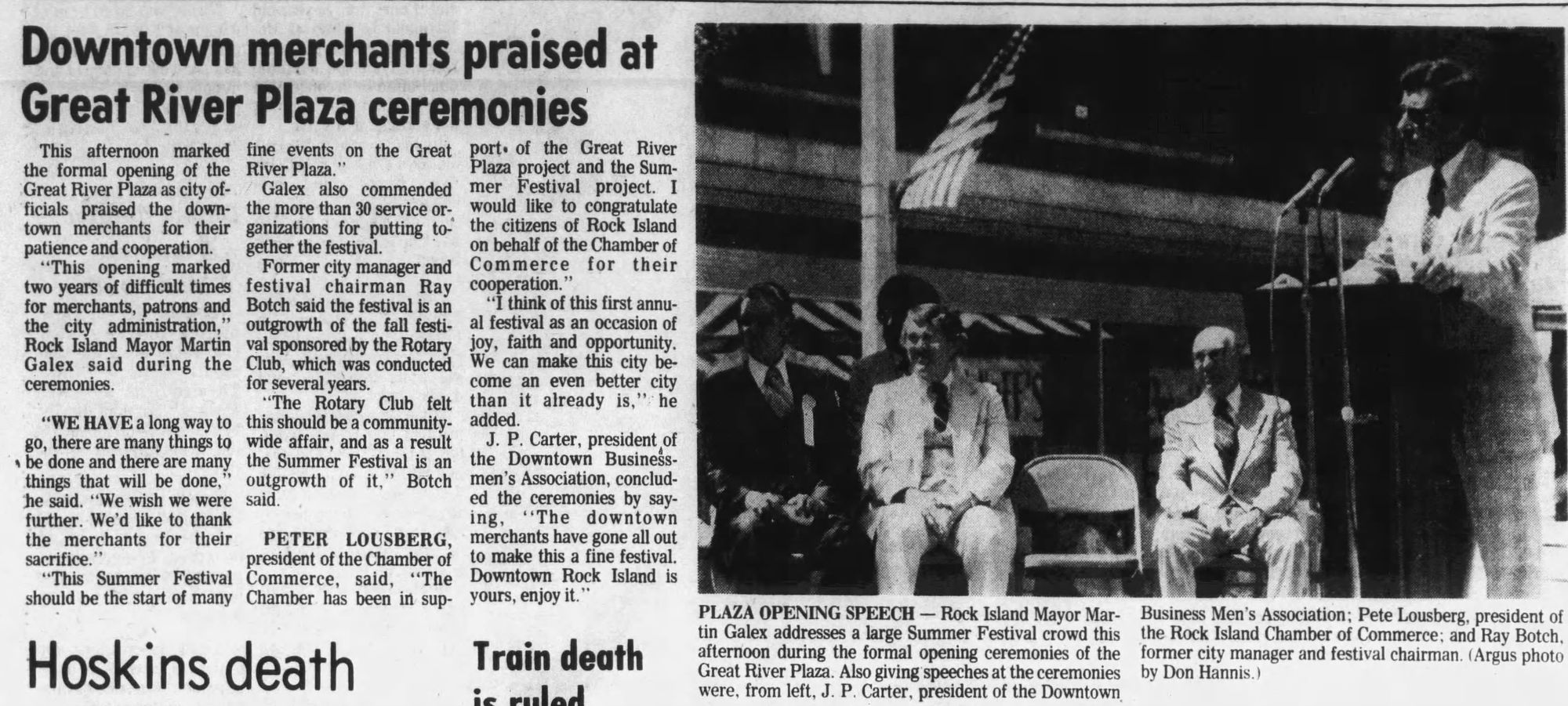
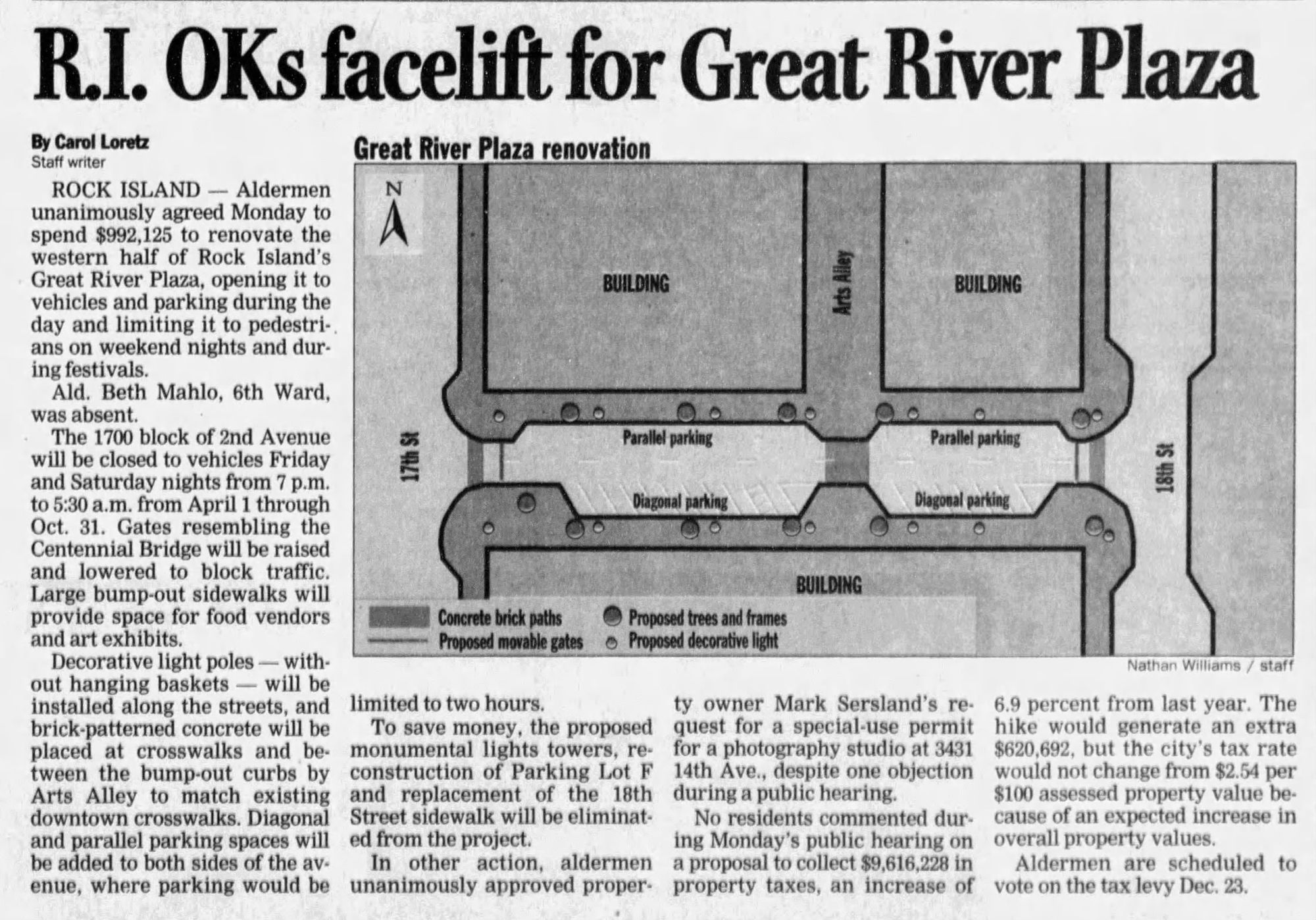
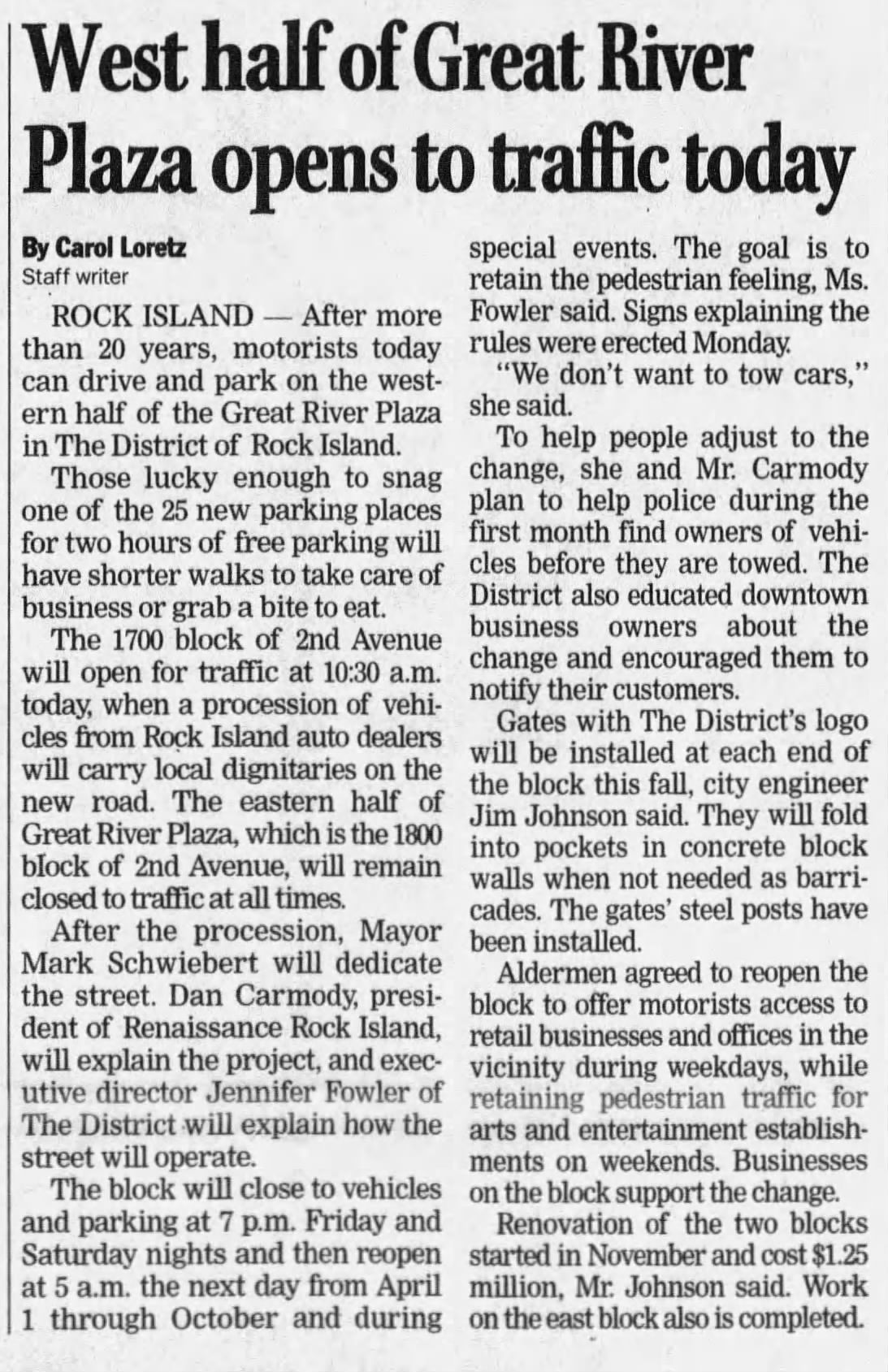
Swimming upstream against a torrent of pro-suburb subsidies and changing societal preferences, pedestrian malls like the Great River Plaza achieved mixed results–opening two blocks to pedestrians was hardly going to revitalize downtown Rock Island on its own. In 2003, two blocks became one, as the city reopened one block of Second Avenue to car traffic. The last block of the Great River Plaza pedestrian mall remains a bustling nightlife spot, but it’s maybe a little scruffy and quiet during the day.
...with that in mind–and because downtown Rock Island is soooooo busy that it’s DESPERATE for more parking–the city is moving forward with plans to turn this block back over to cars, converting the street into a Dutch-inspired woonerf, a “living street” that forces cars to slow down through design choices like using masonry pavers and eliminating curbs. A peer to uselessly short woonerfs in Chicago (on Argyle) and Batavia (River St), I can pretty confidently say that never in a million years would a Dutch city lay down some brick pavers on a single random city block, clap their hands, and say “Woonerf. We zijn klaar”.
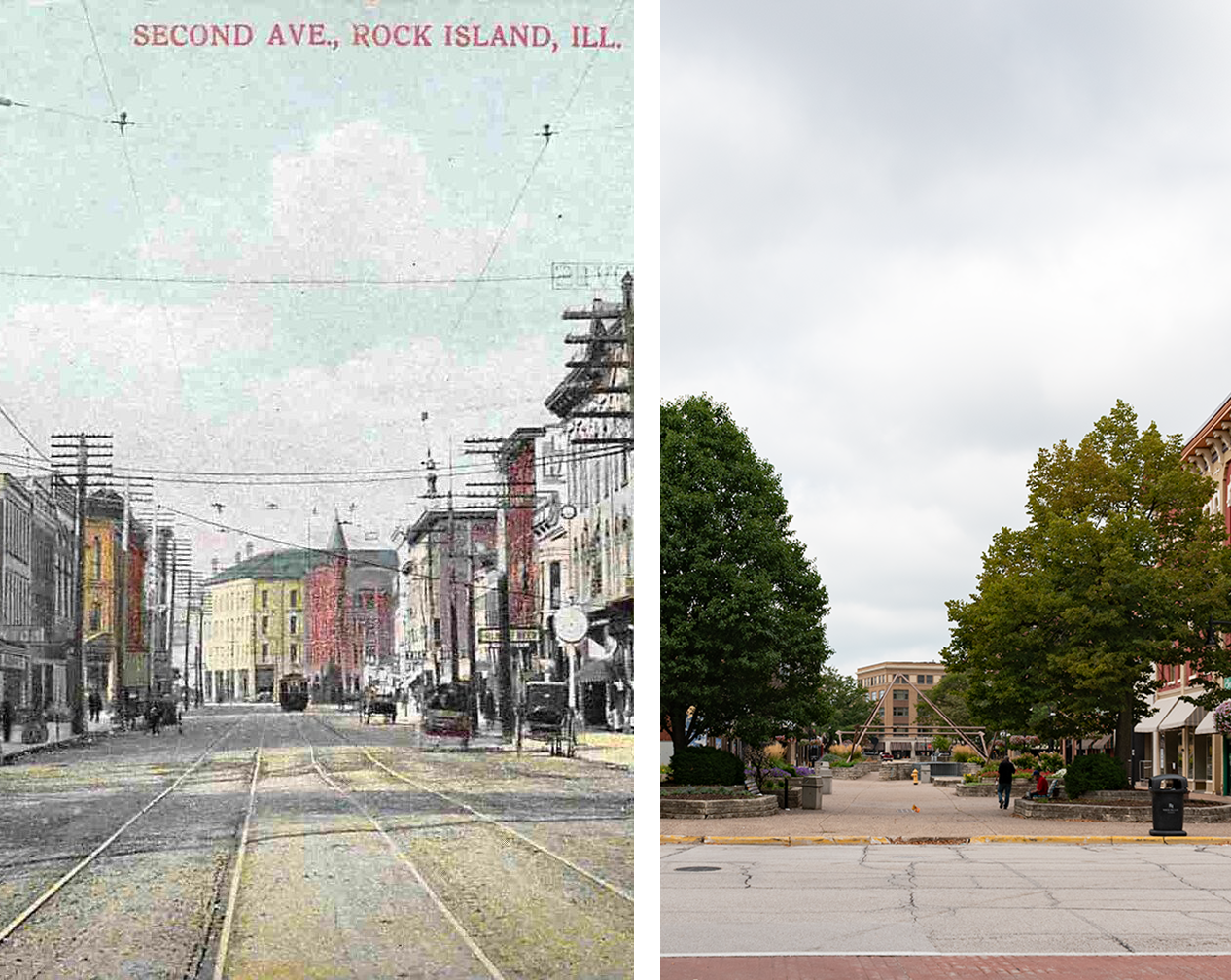
In the distance, in the center of the street, you can spot the much-altered but still standing Rock Island House, now known as the Goldman Lofts. Built in 1875, it was the other downtown Rock Island hotel. Sold in 1922 to a furniture retailer, the new owners took the building in an unusual direction. In an interesting example of early adaptive reuse, Hill Furniture turned the old hotel into a department store, designed by our old friends Cervin & Horn (the pair also designed the Fort Theater, and Cervin did the Rock Island Masonic Temple). The building housed a Sears Roebuck department store in the 1940s and 1950s. With financing from the LIHTC and the city of Rock Island, the building was rehabbed and converted into the Goldman Lofts in 2001, a mixed-income mixed-use development.

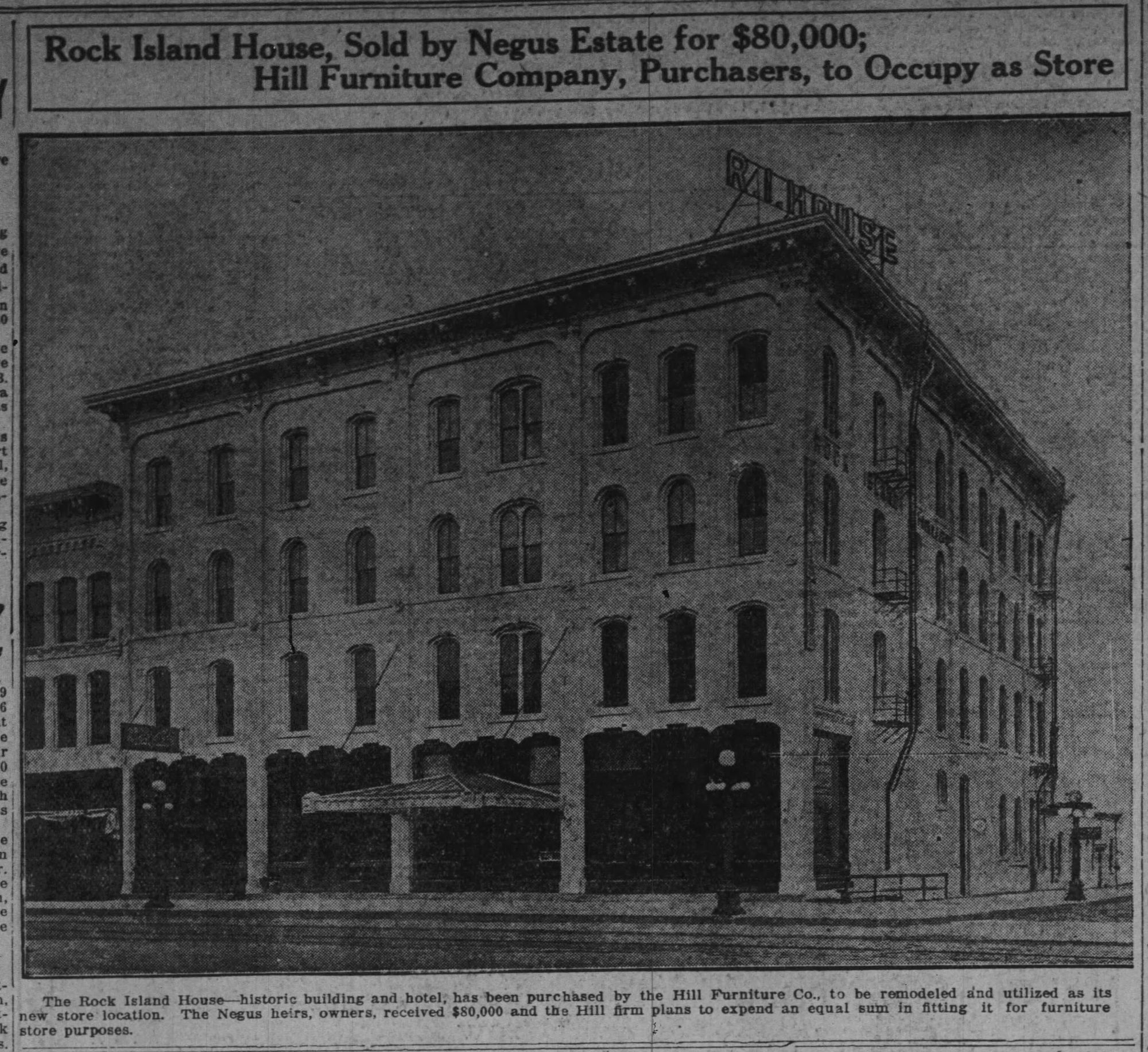

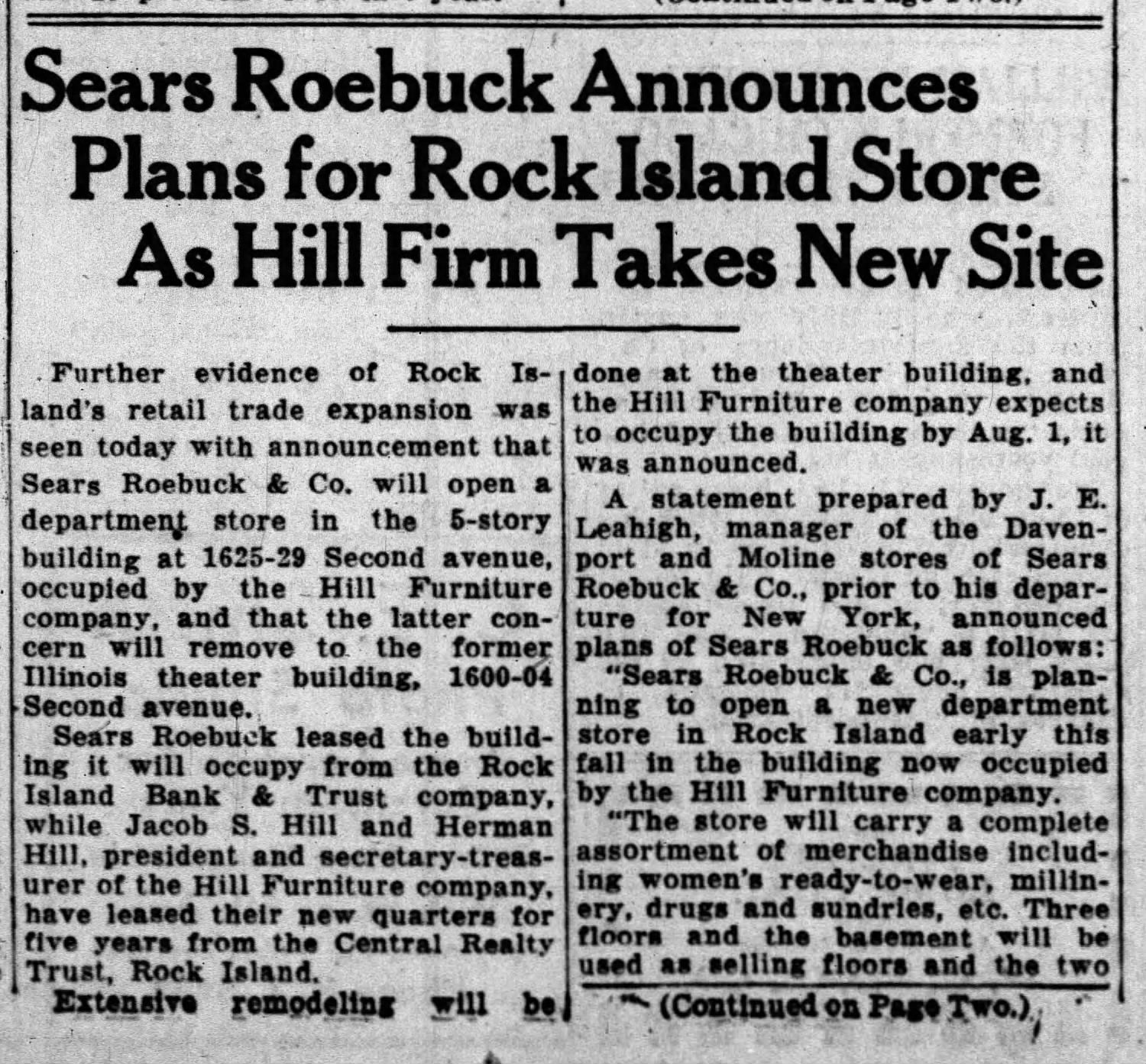
Production Files
Further reading:
- The 2020 NRHP nomination form for the Downtown Rock Island Historic District
- The always-excellent Rock Island Preservation Society on the Harper House Hotel
- The Rock Island landmark designation for the Star Block, as well as some articles about how it was rehabbed and the complexity of securing financing
- Some information on the Great River Plaza pedestrian mall: the city's longterm plan for it (PDF), progress on their plans to return car traffic to the block, and some great 1970s and 1980s photos of the Great River Plaza
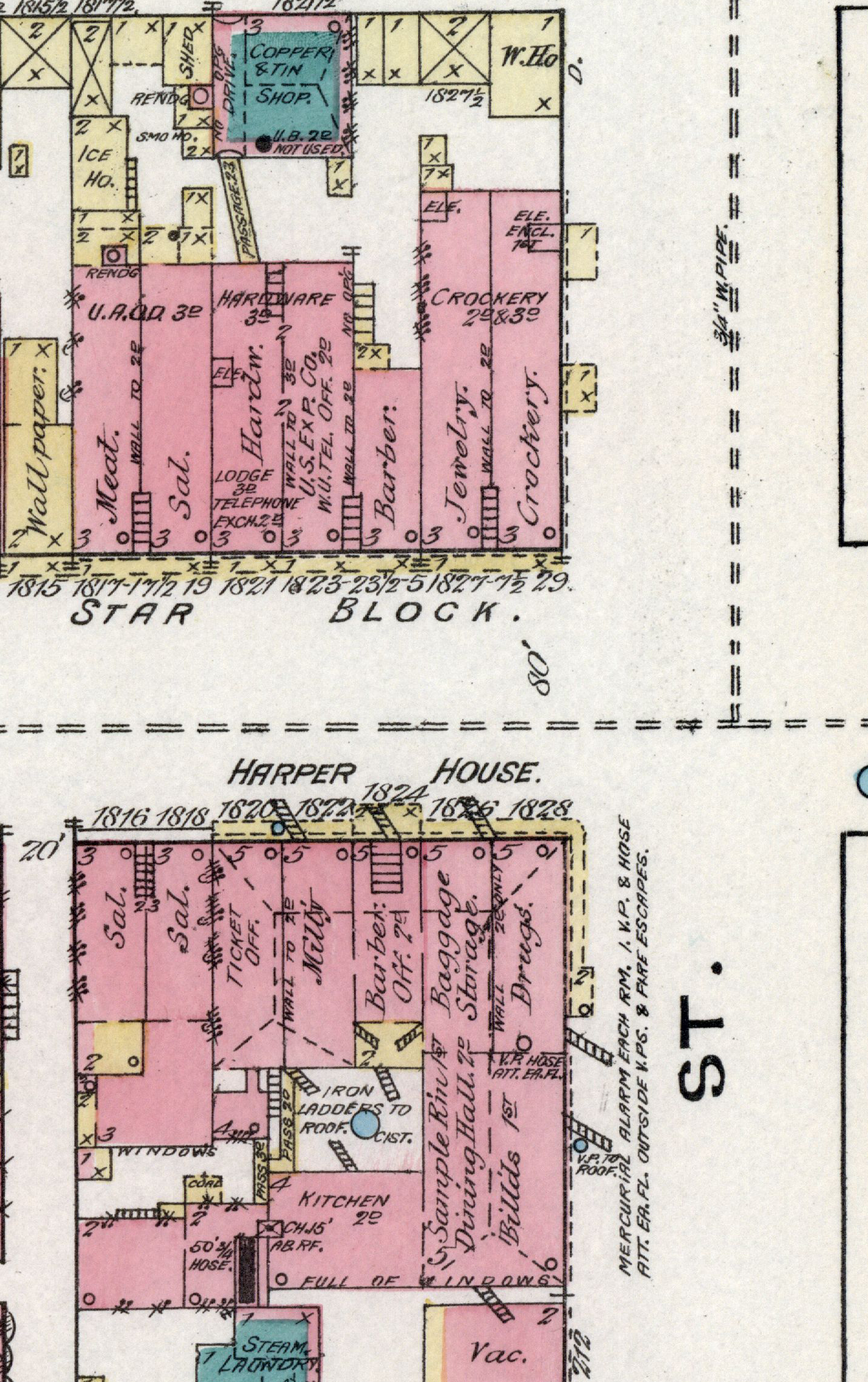
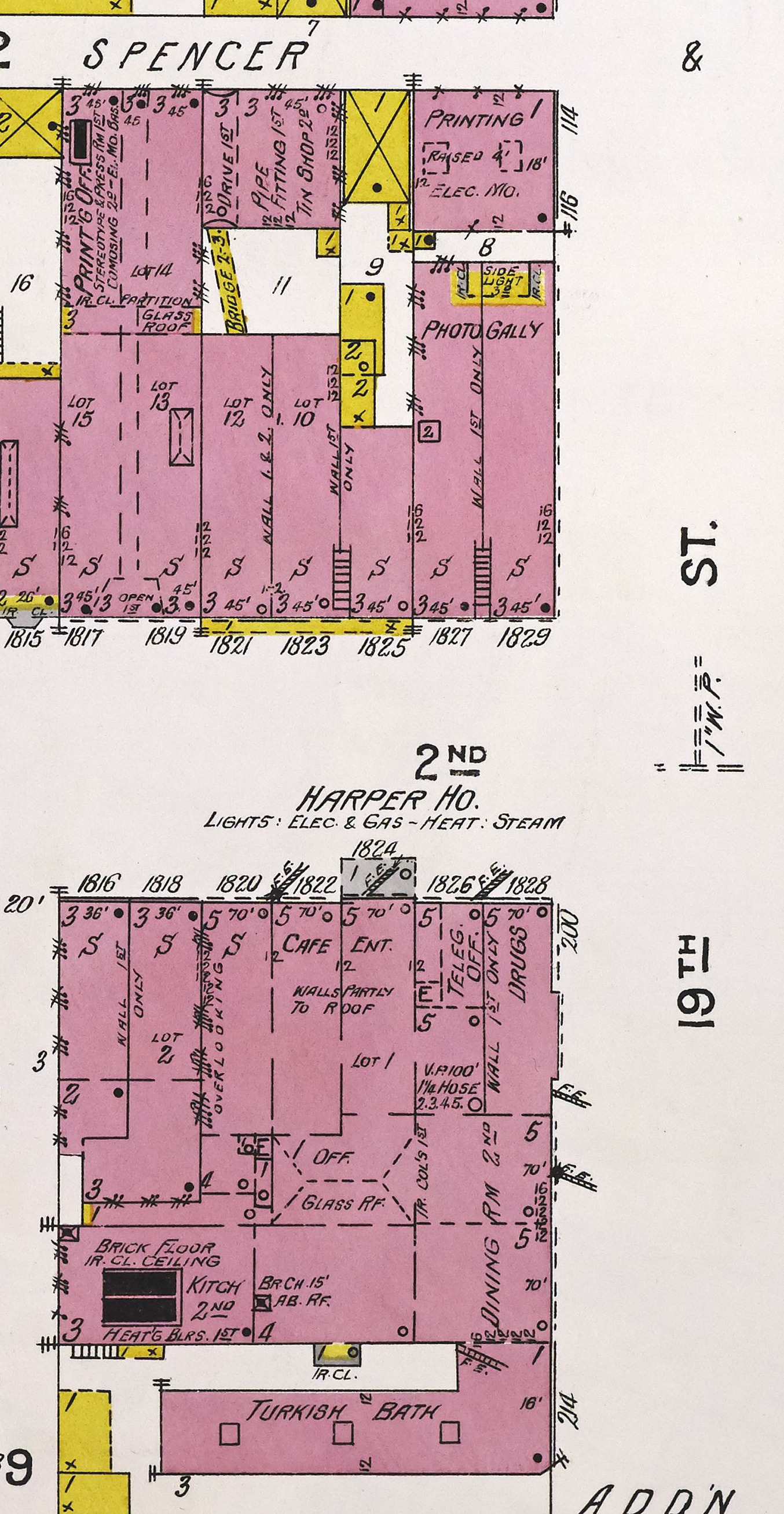
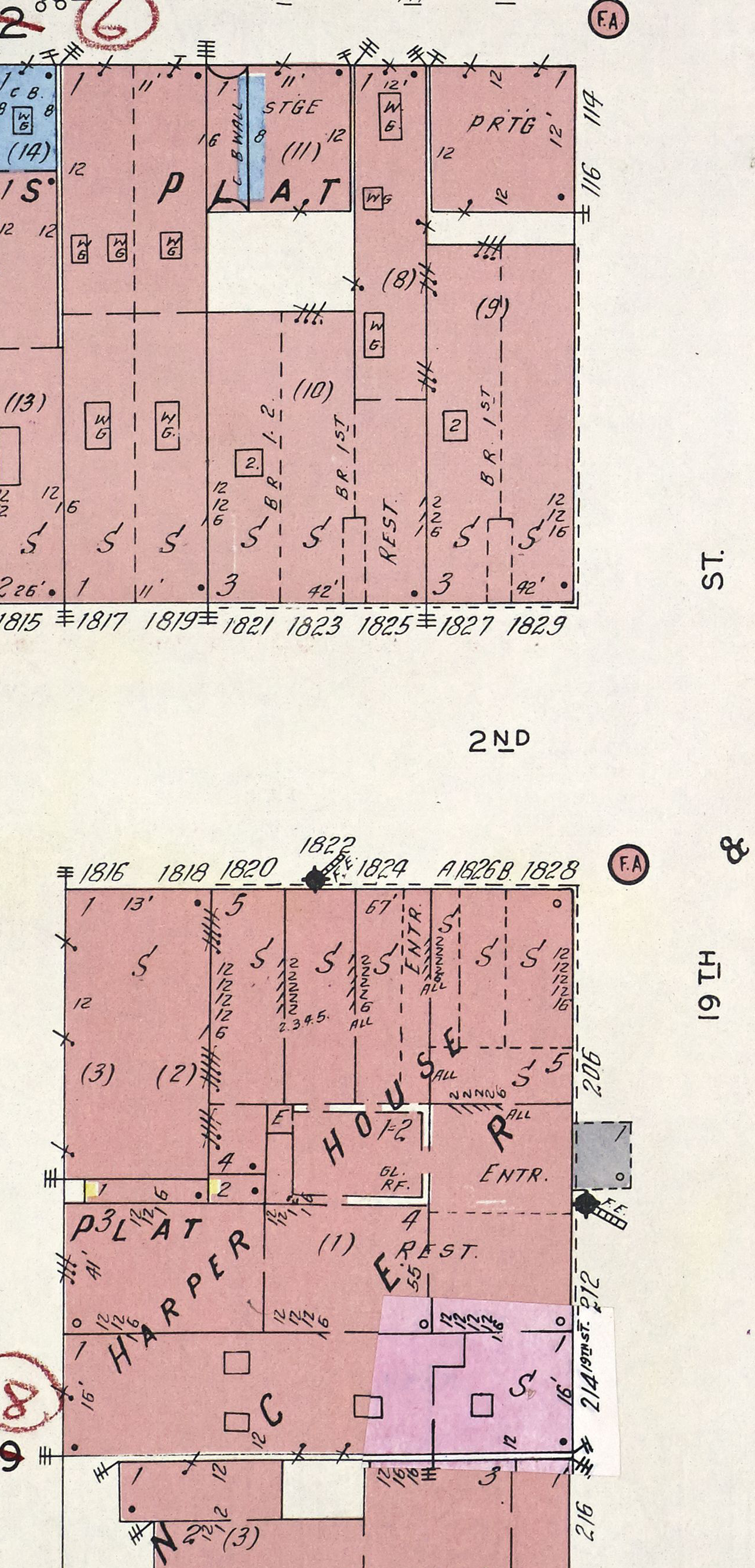
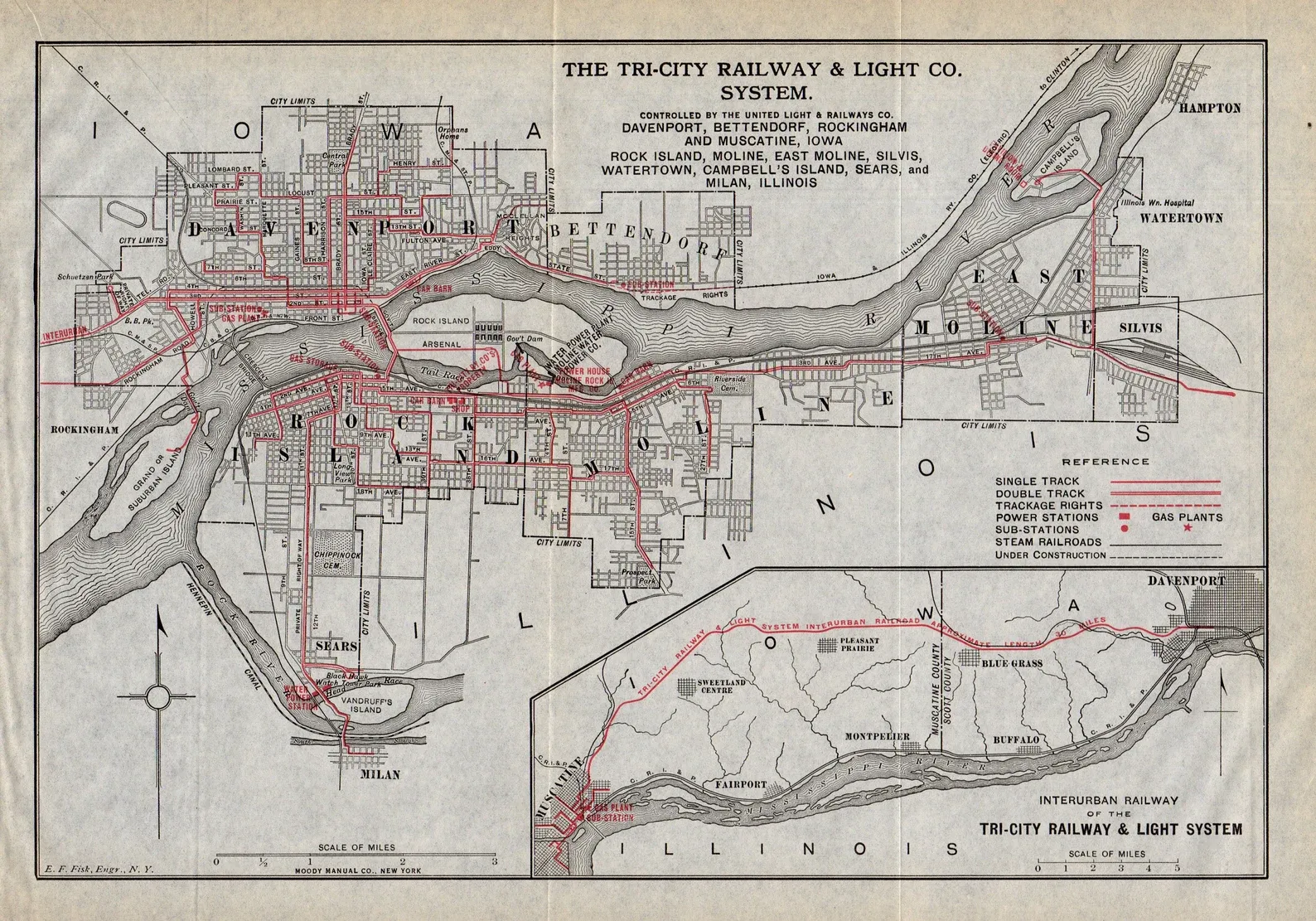
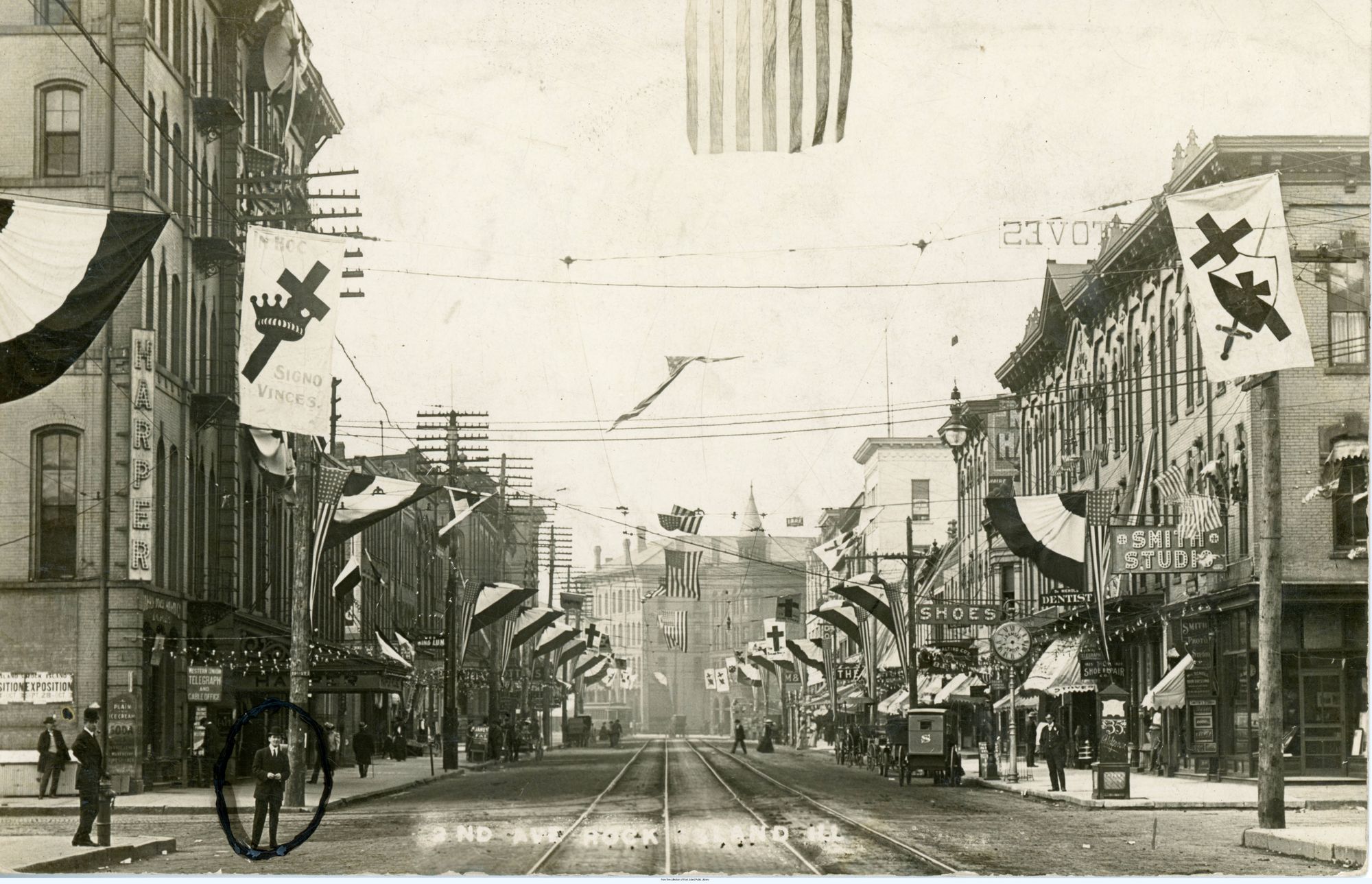
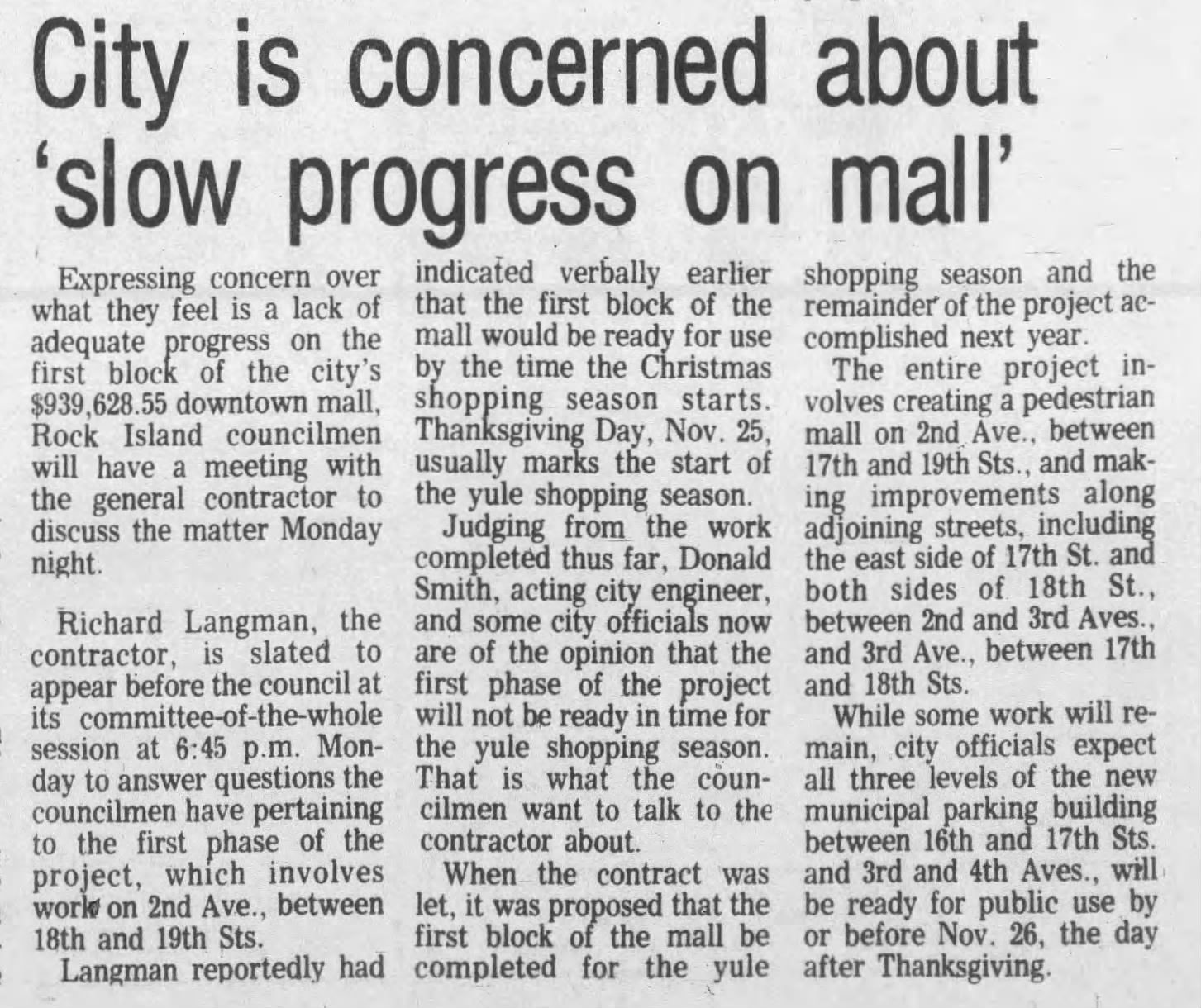
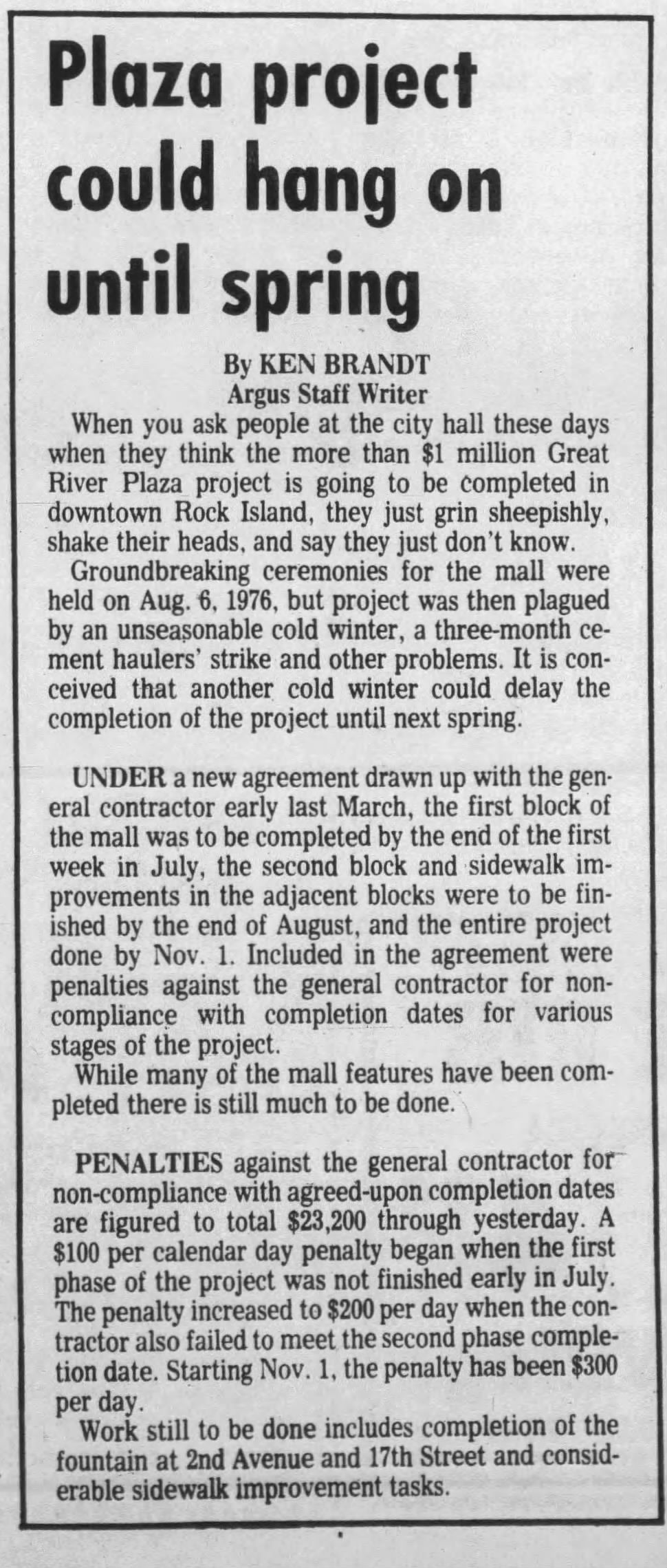
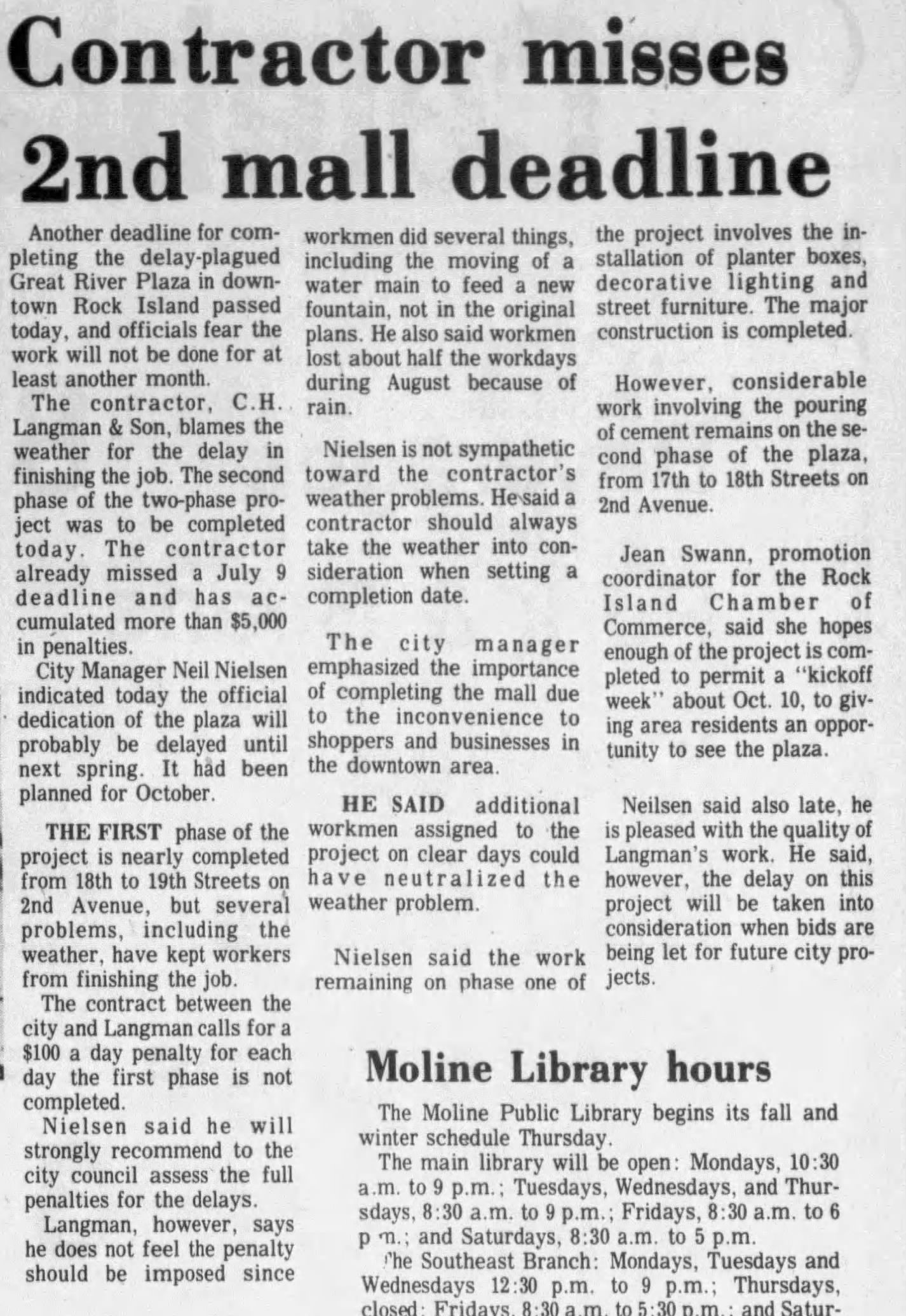
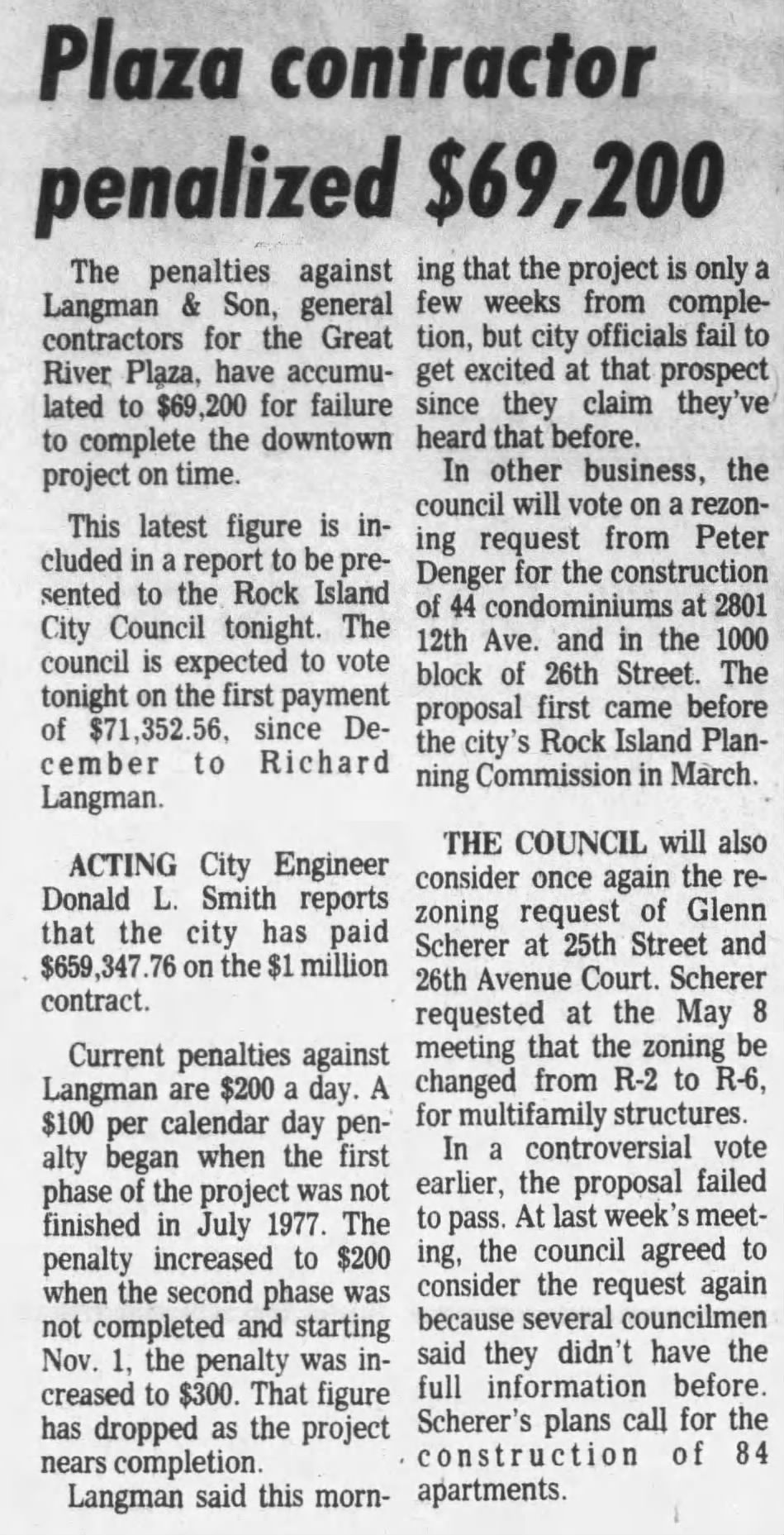
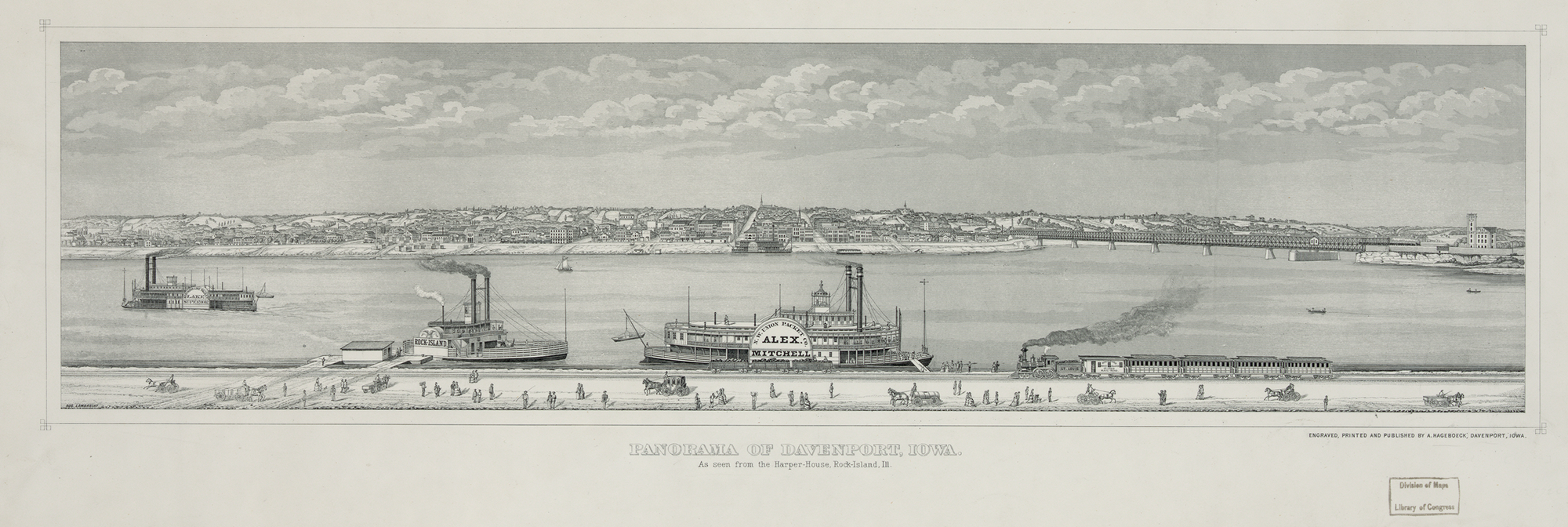

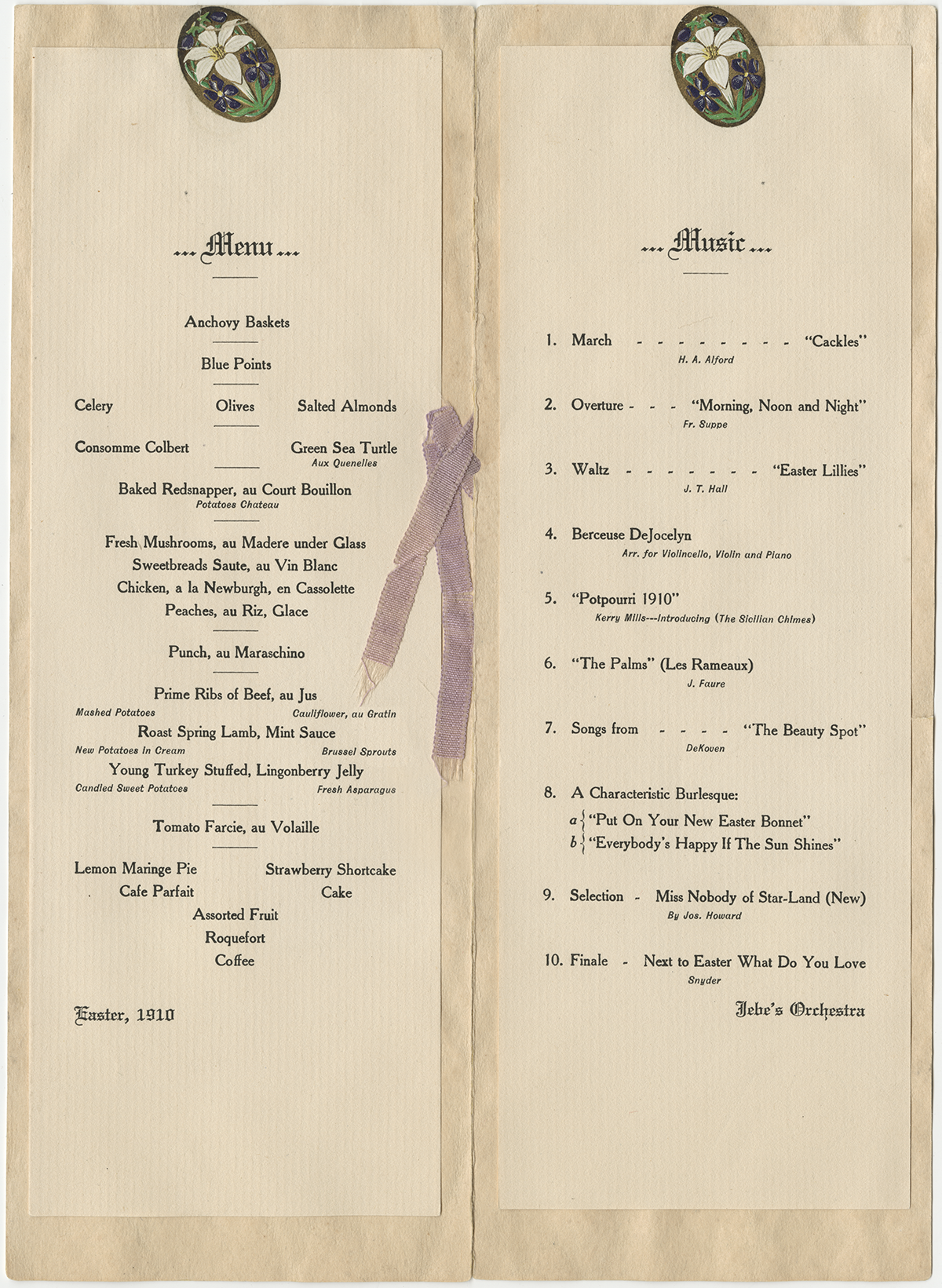
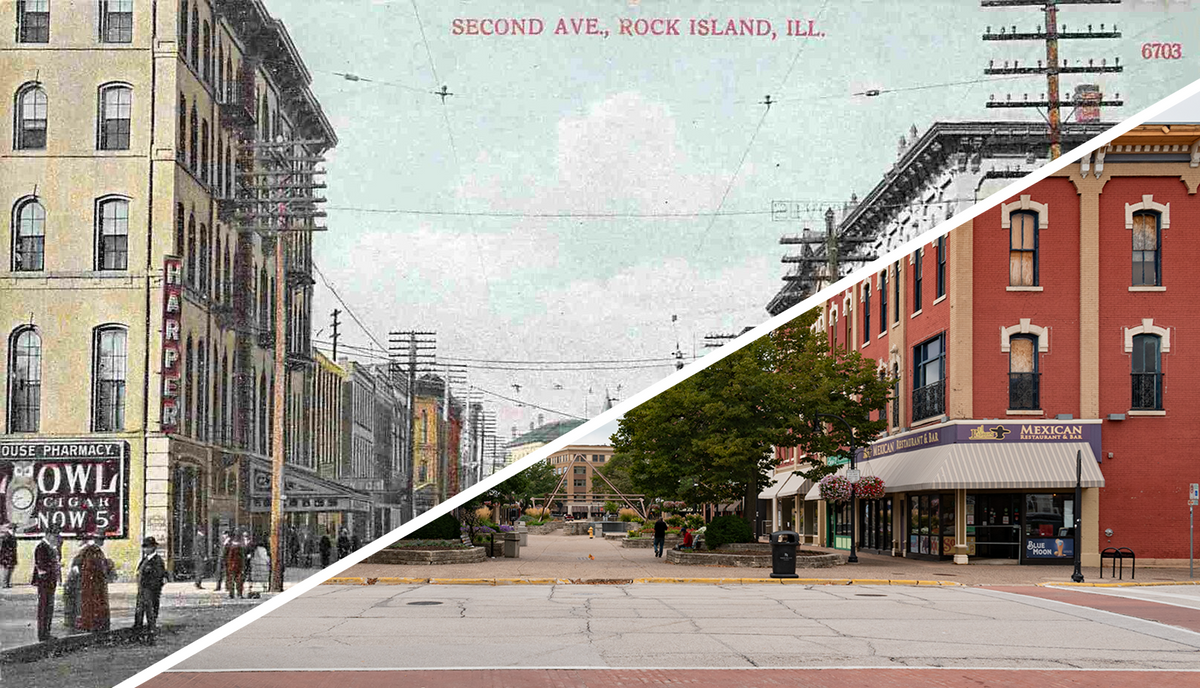
Member discussion: